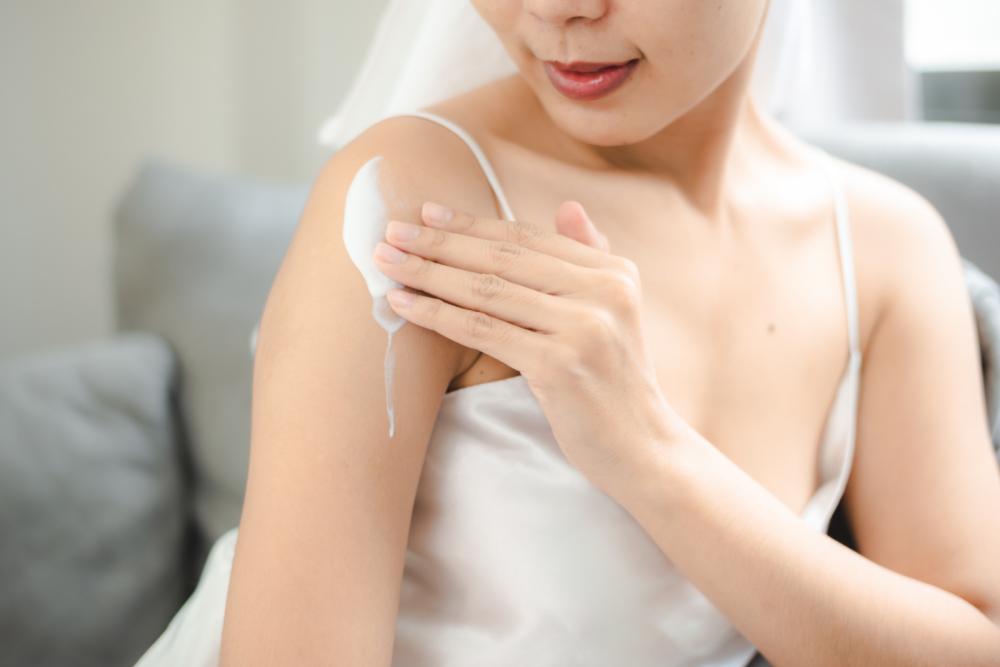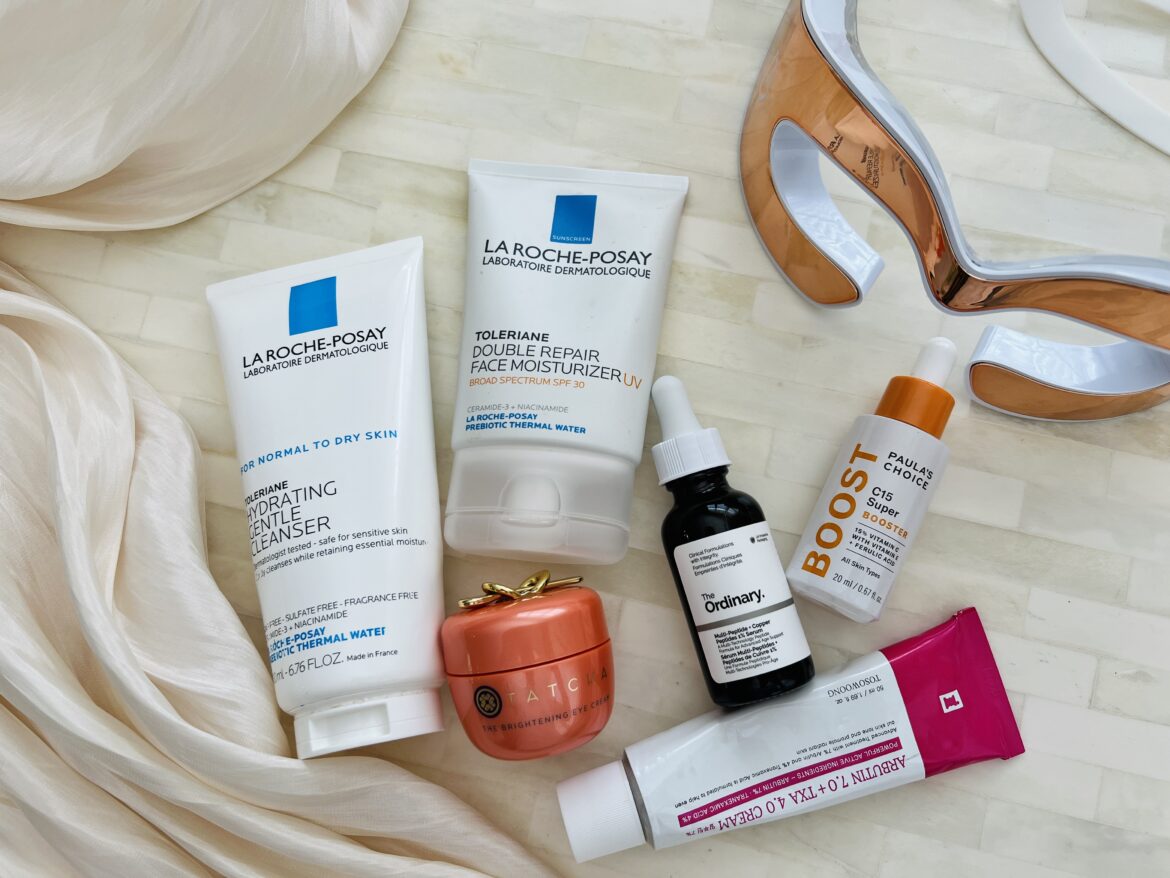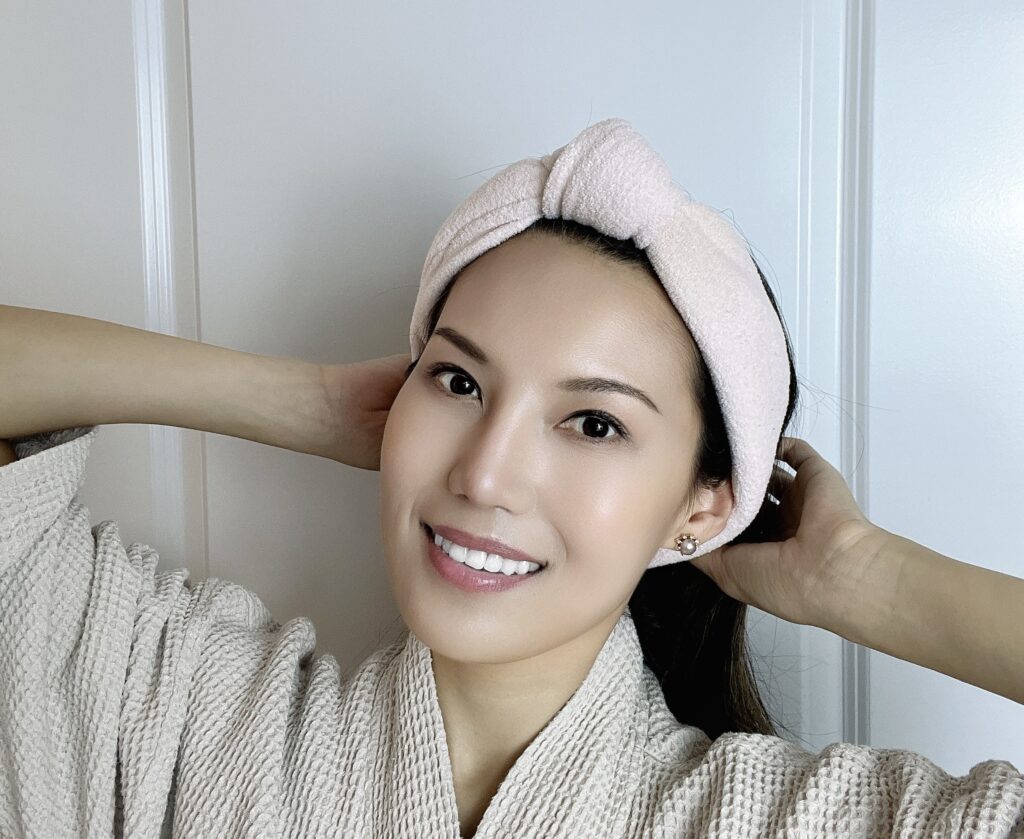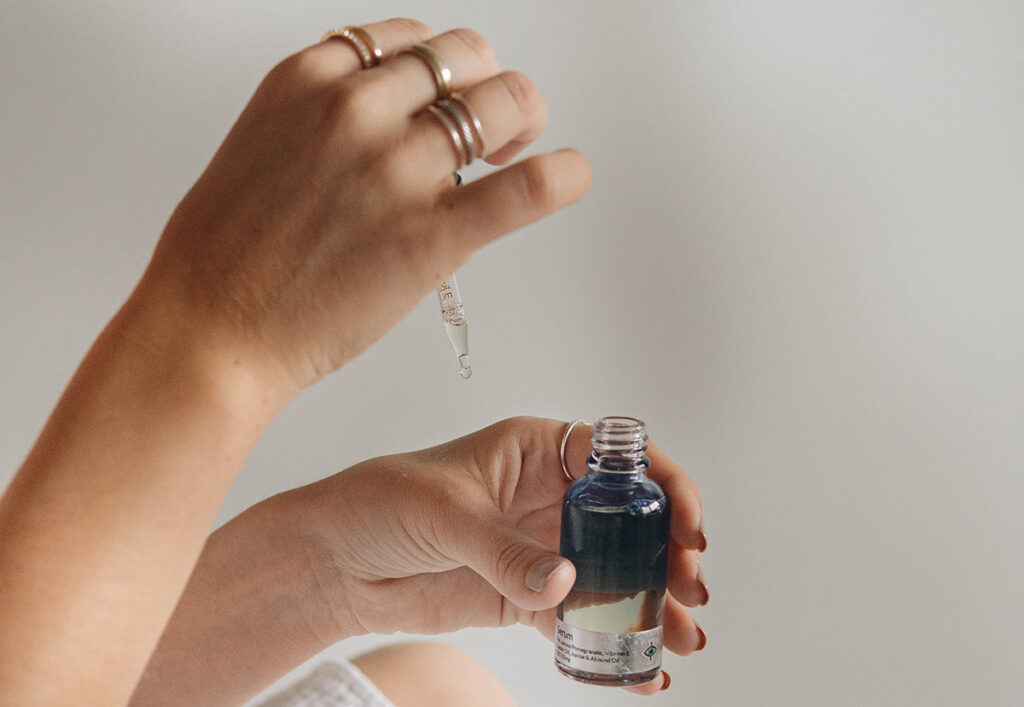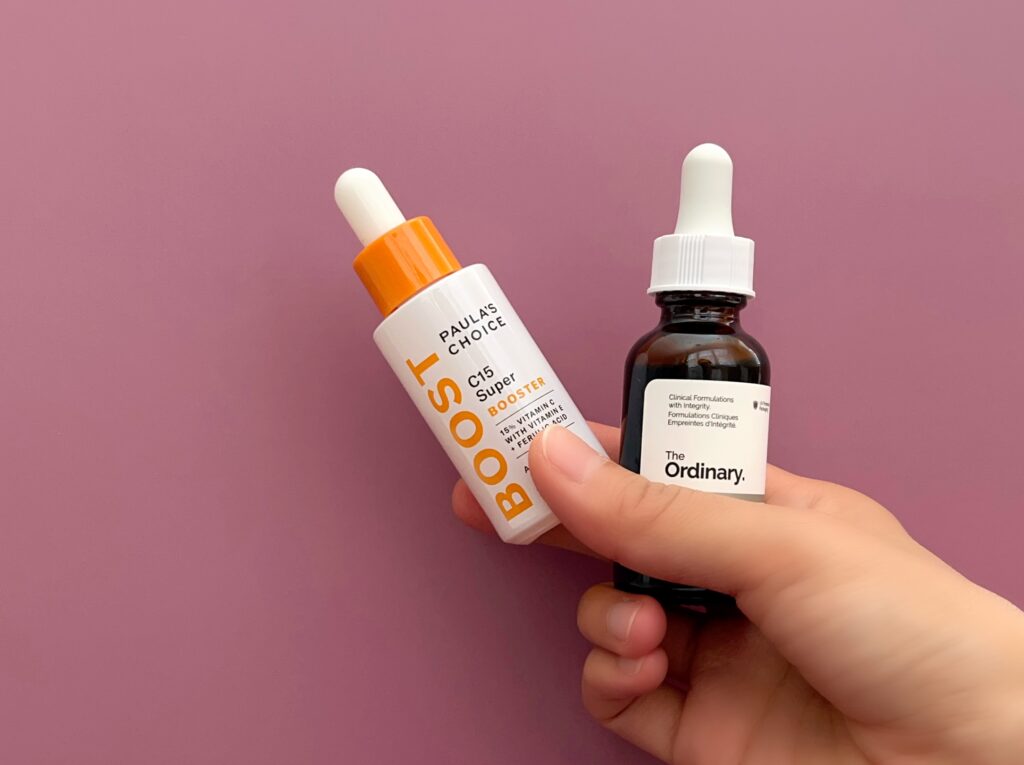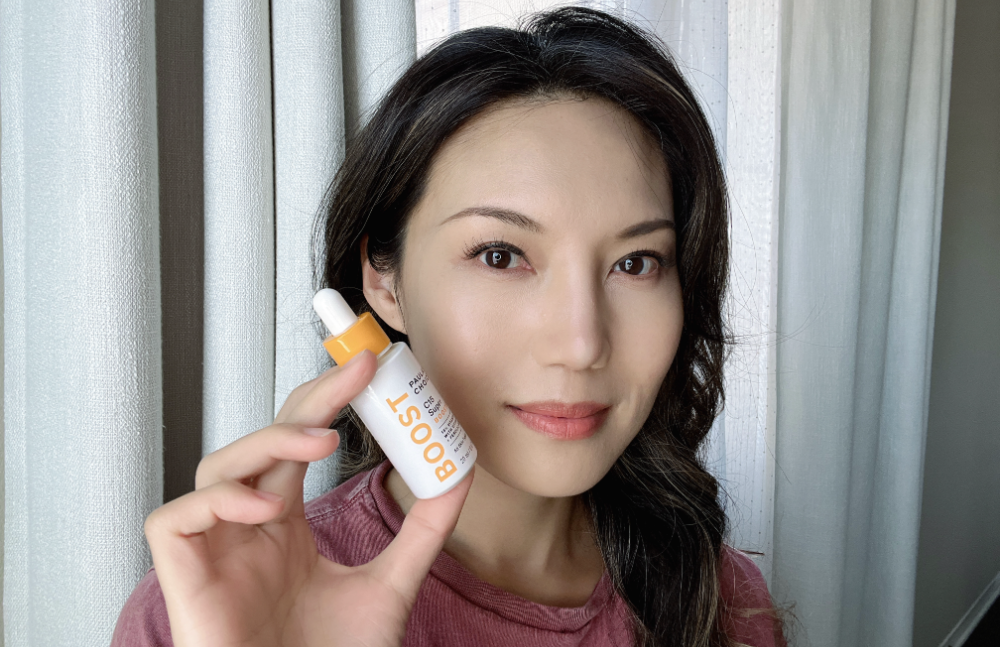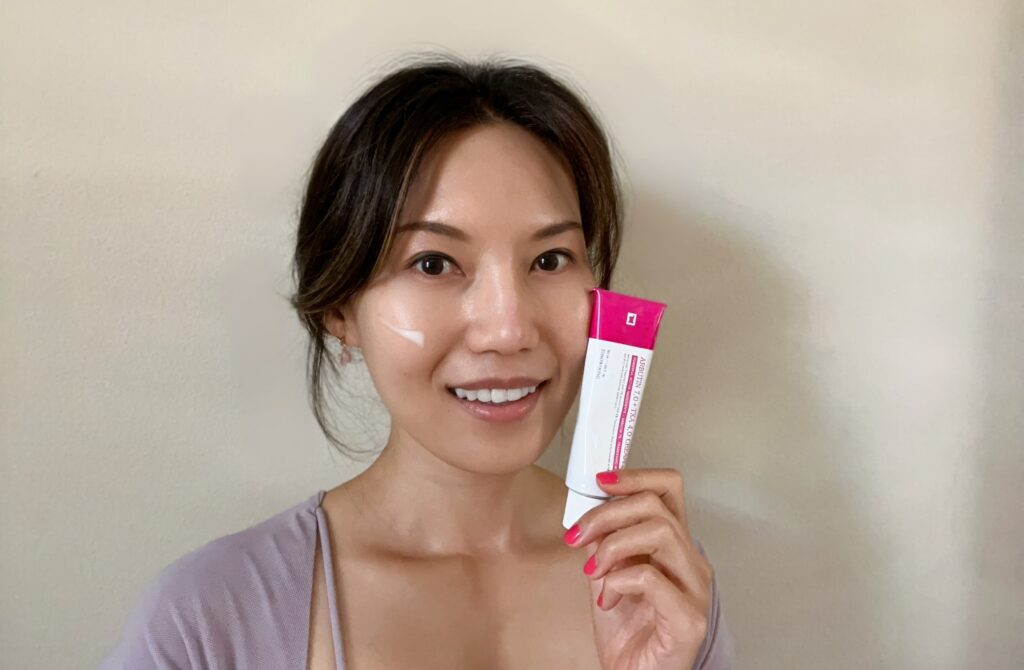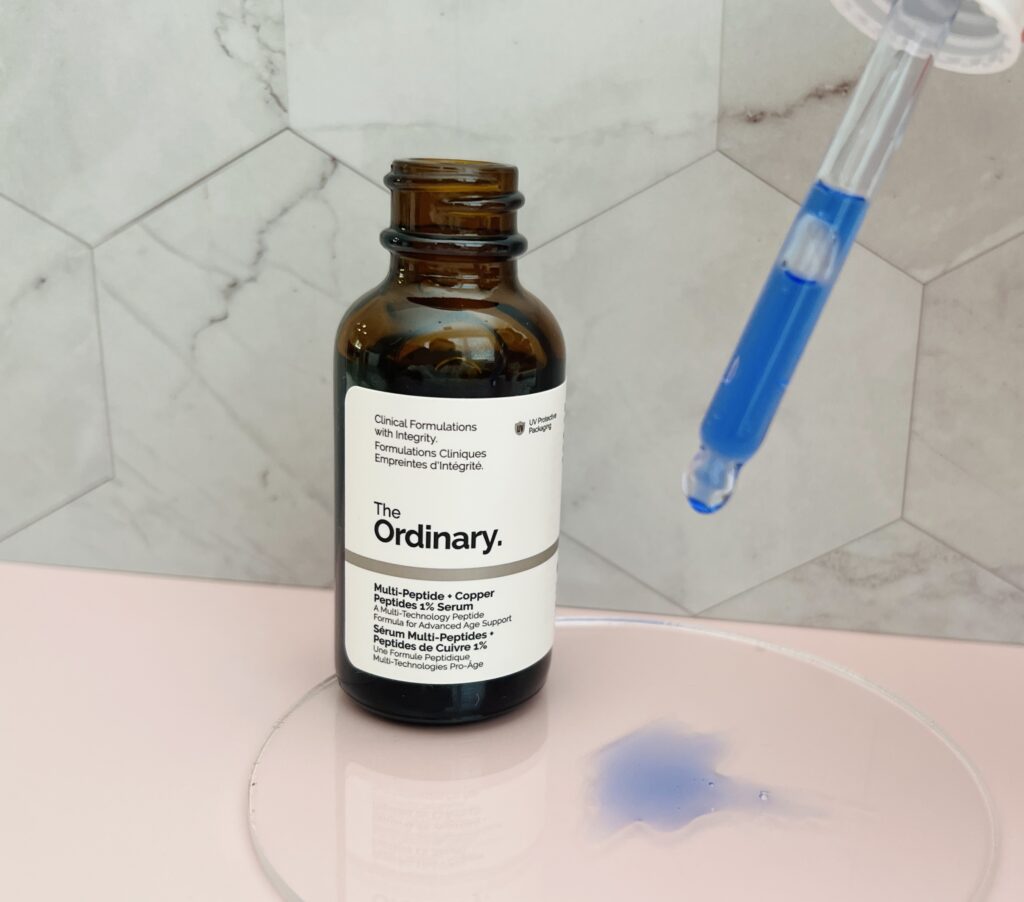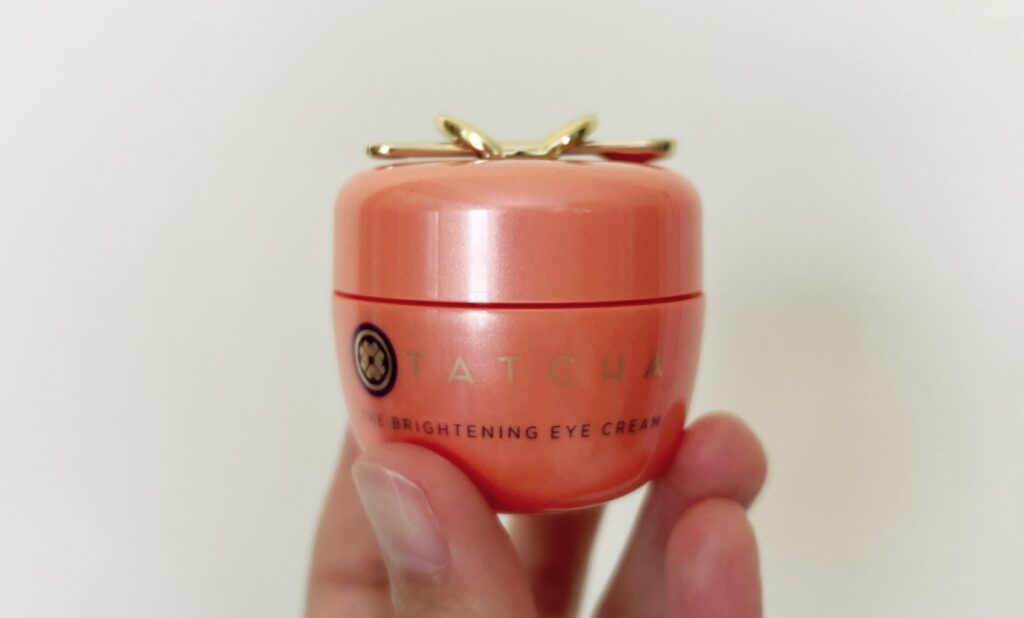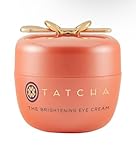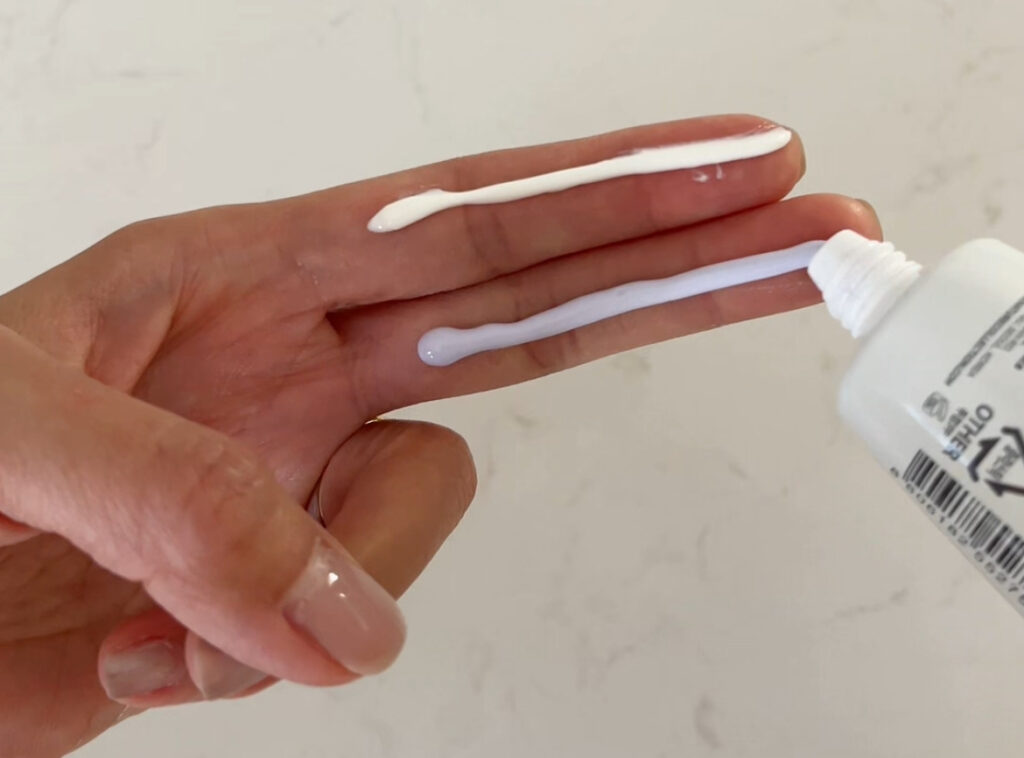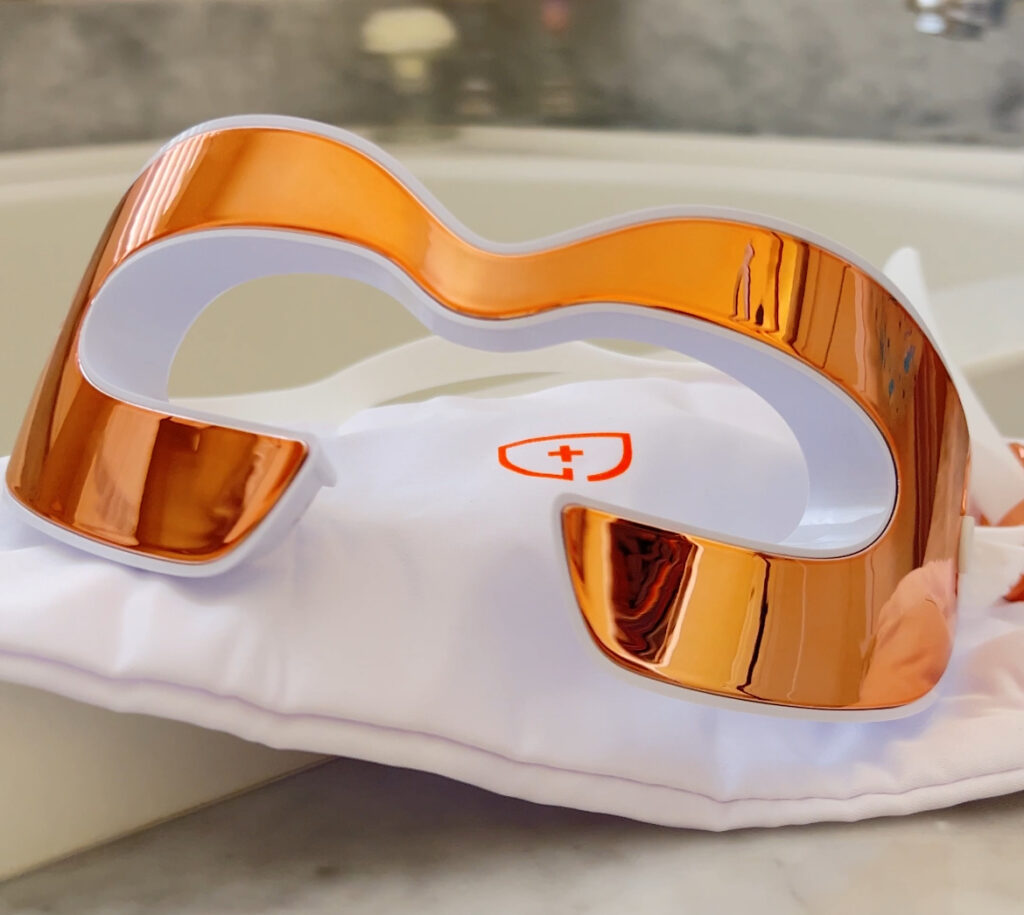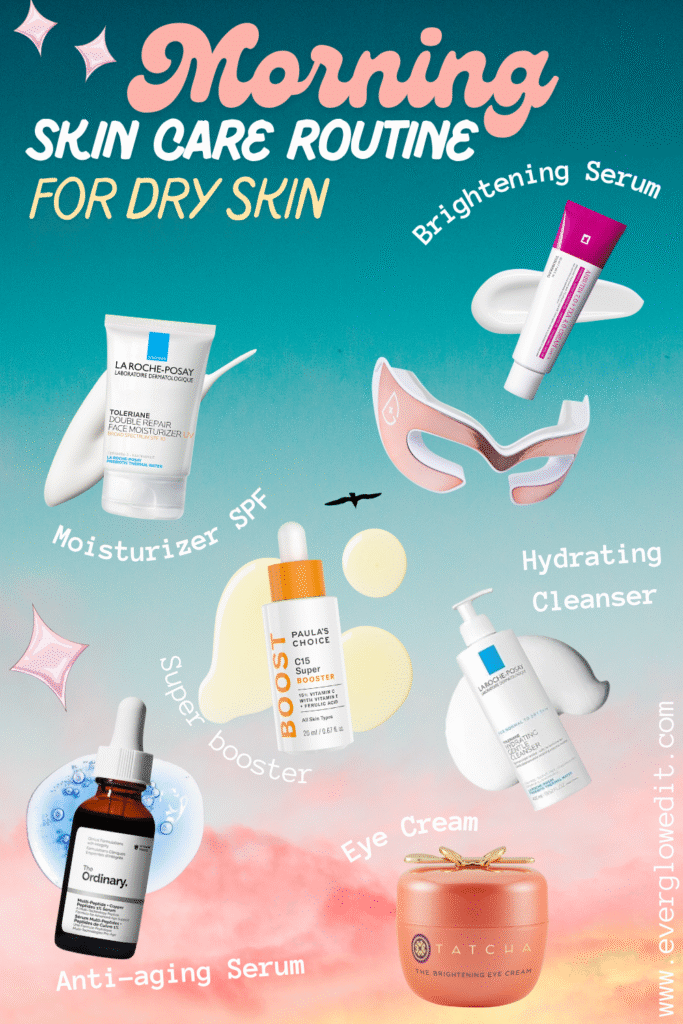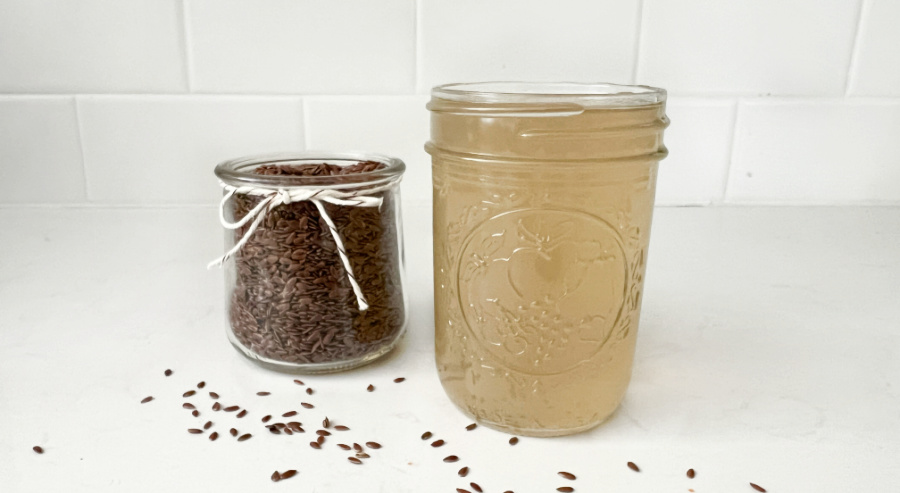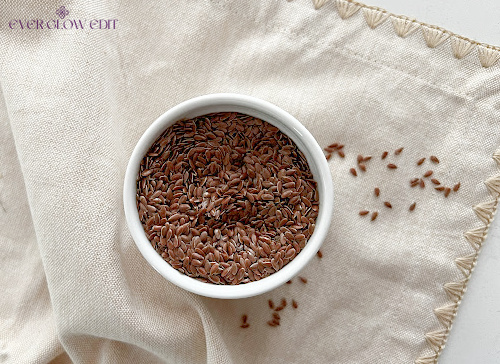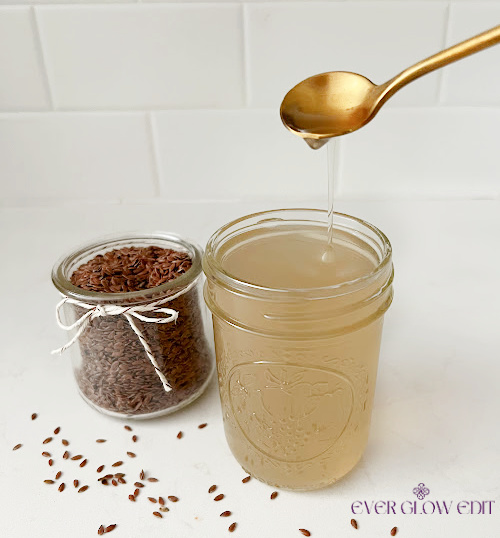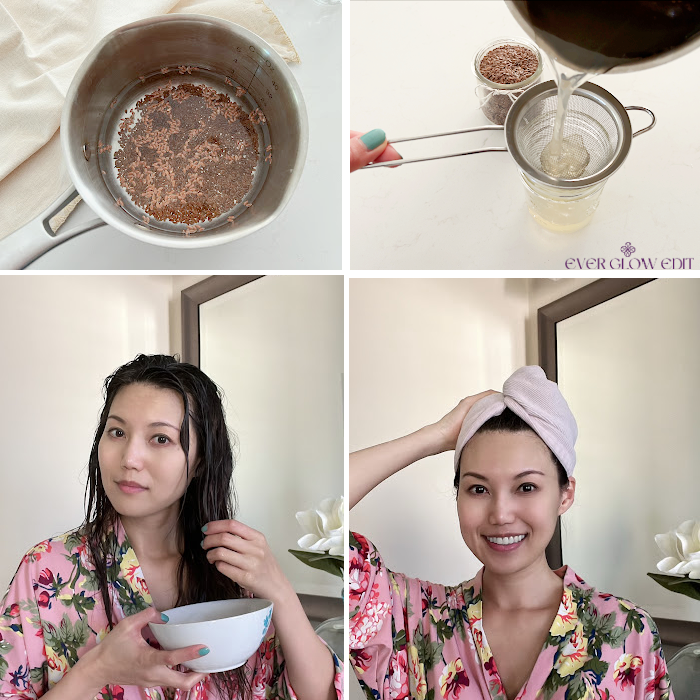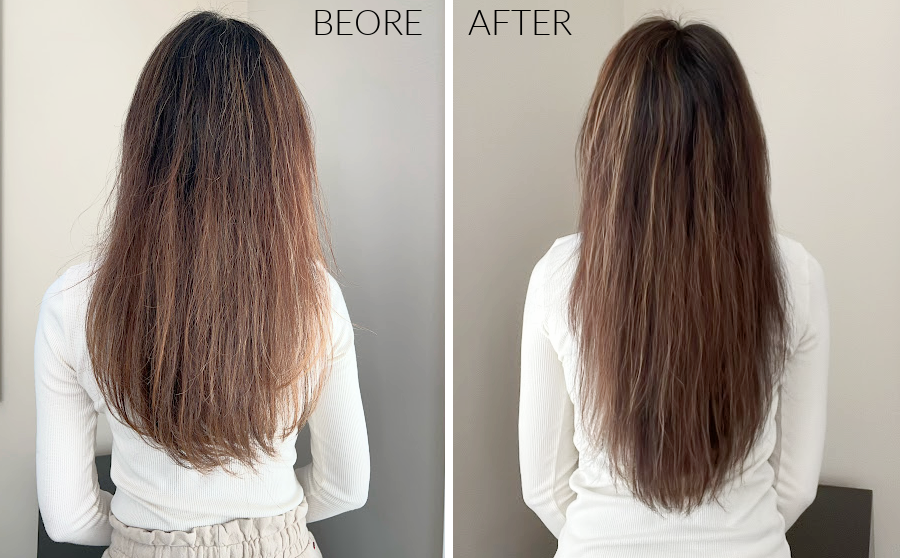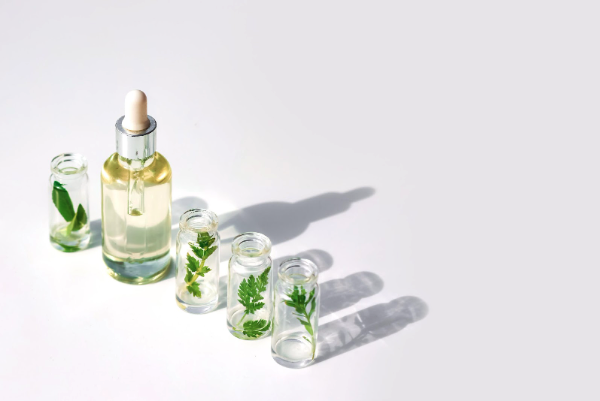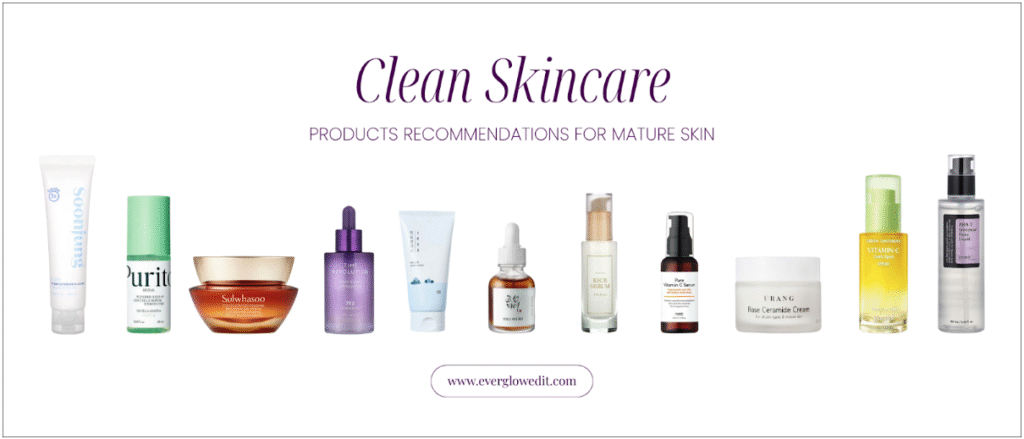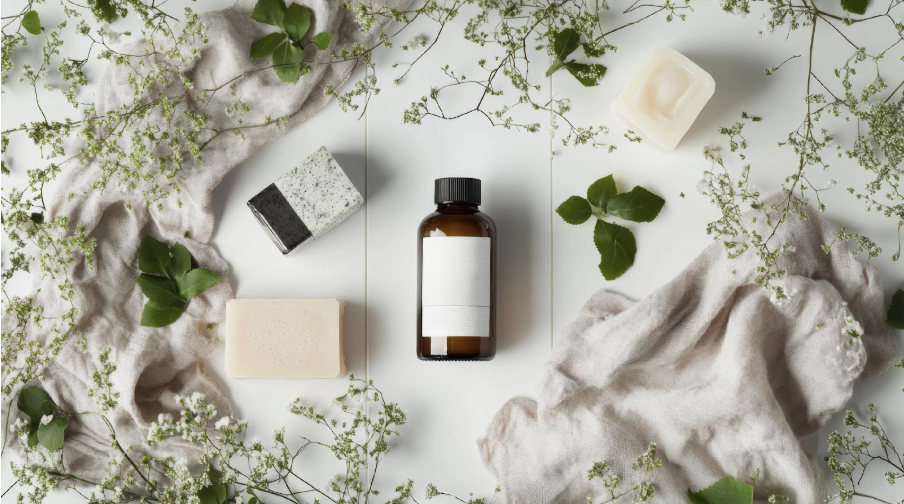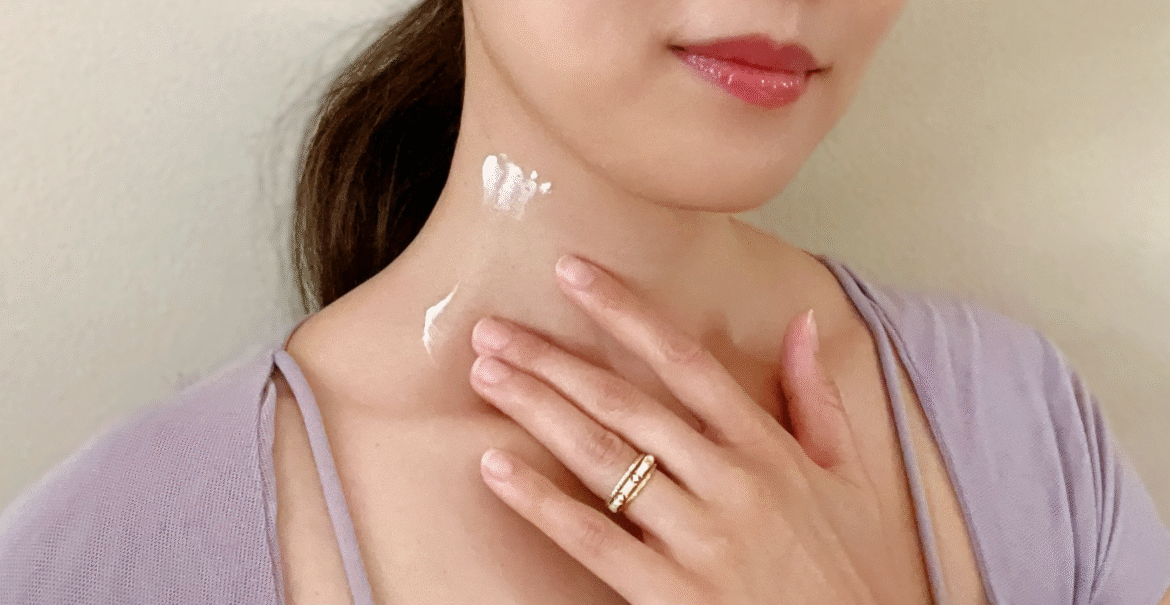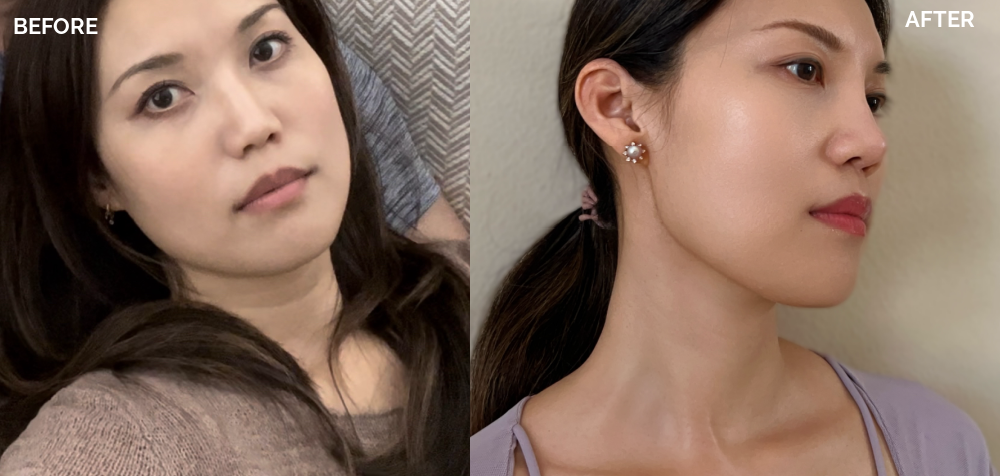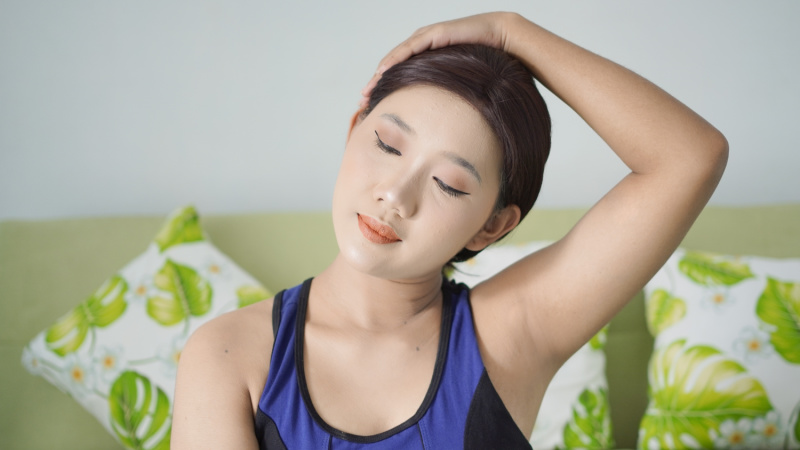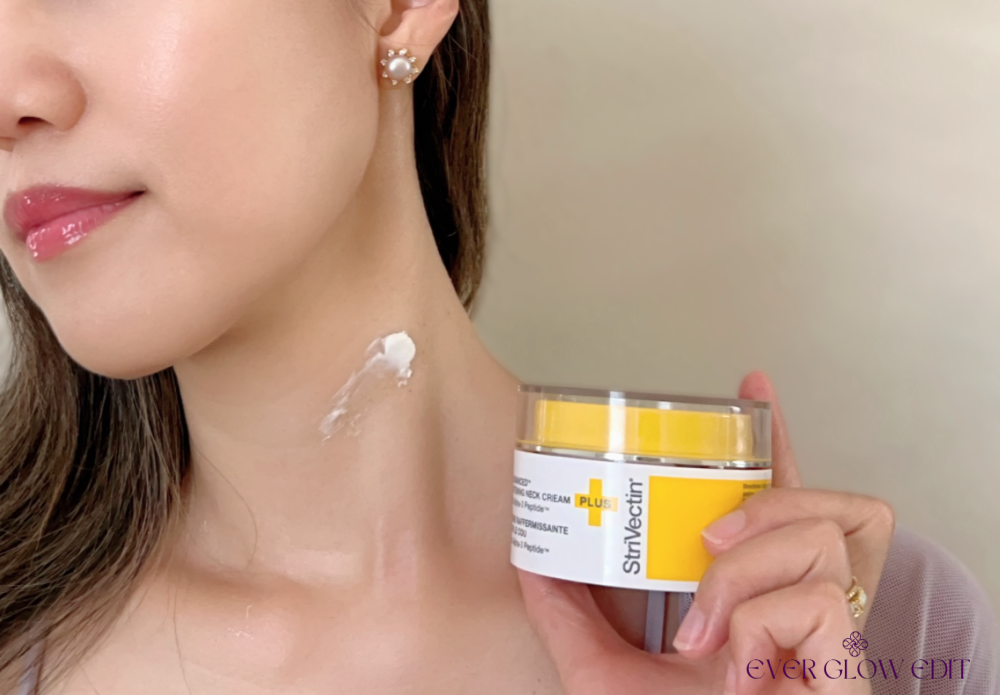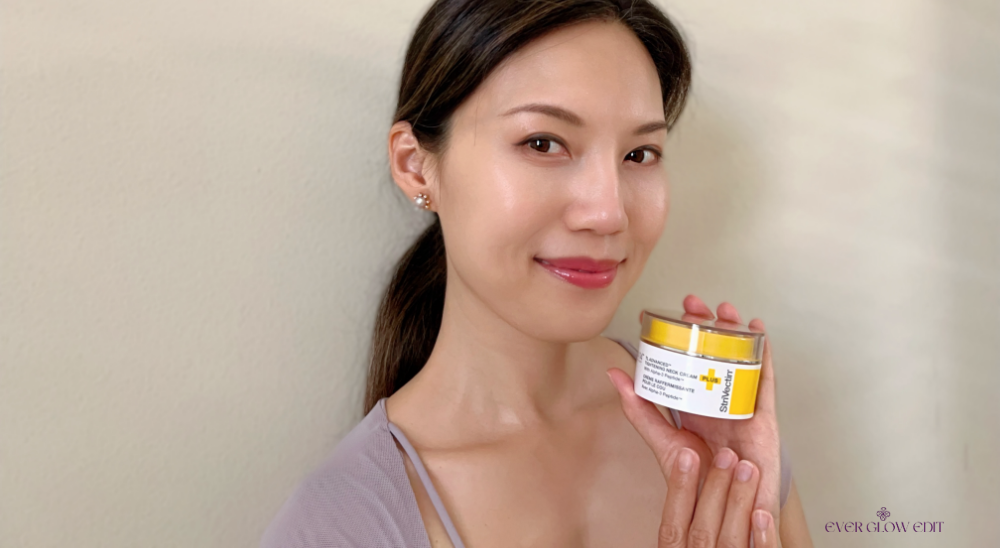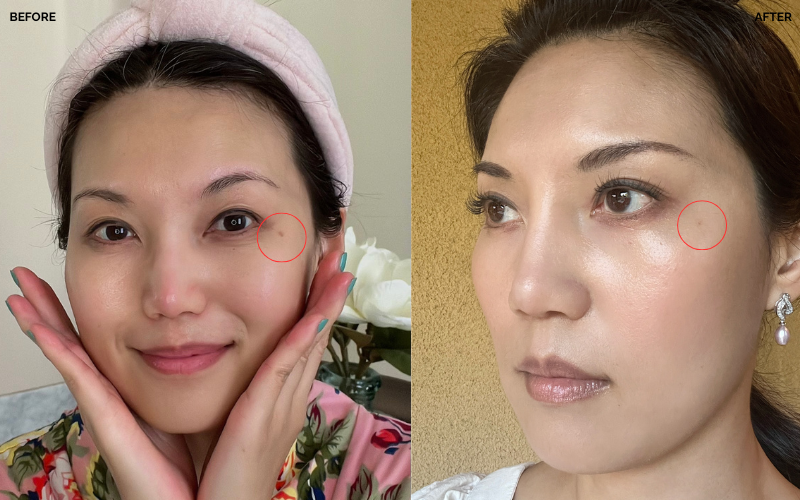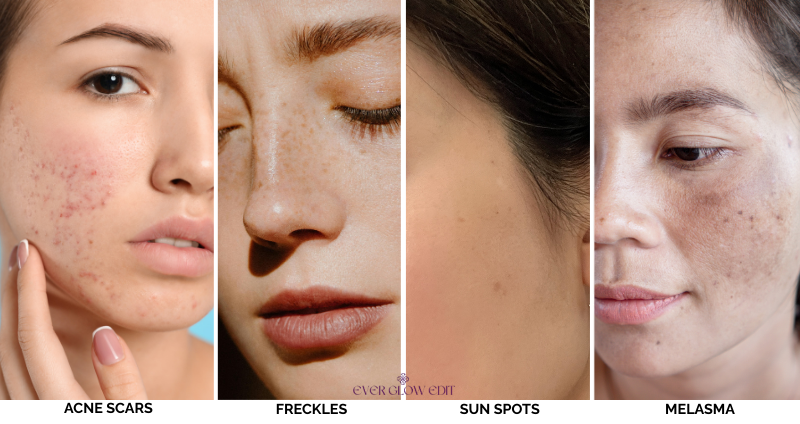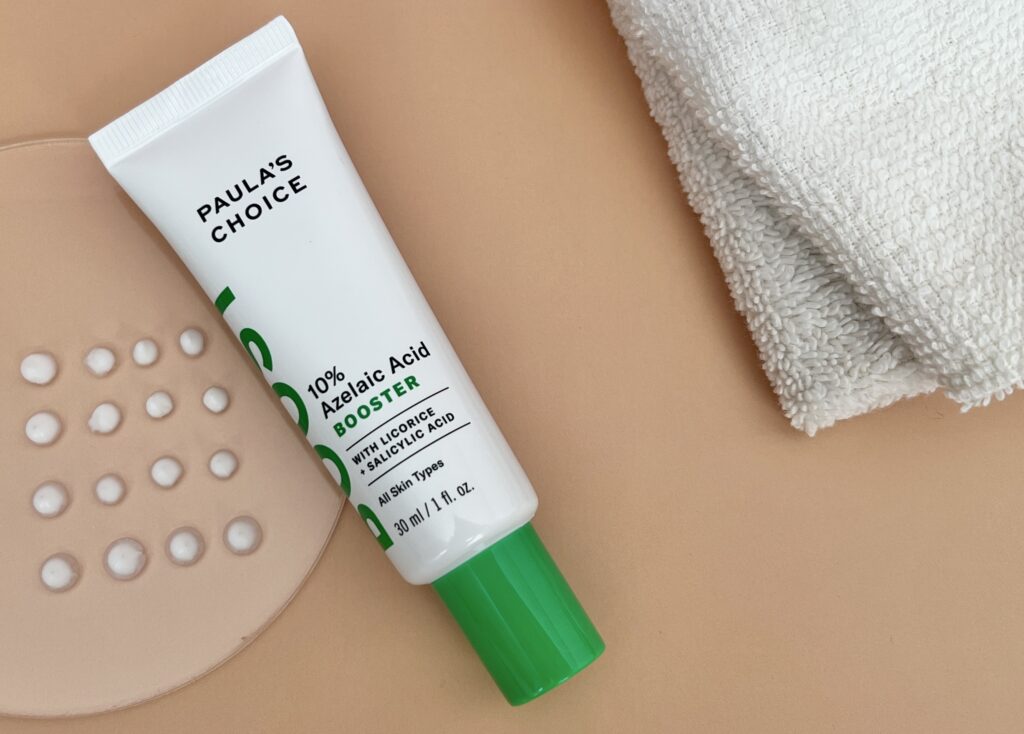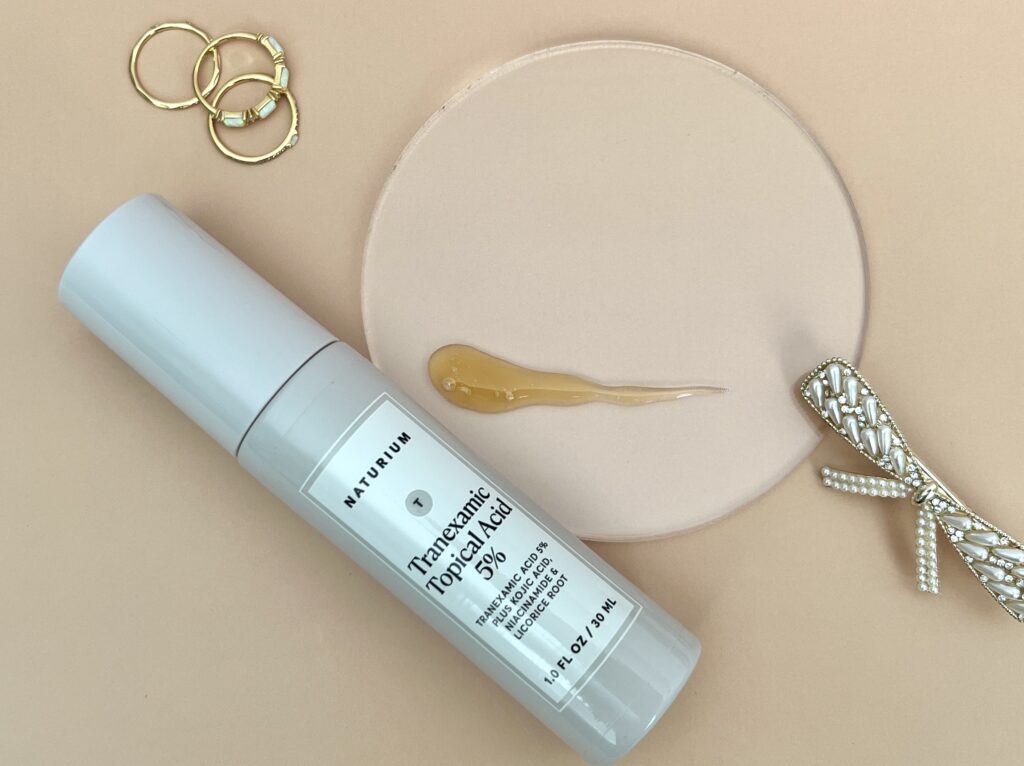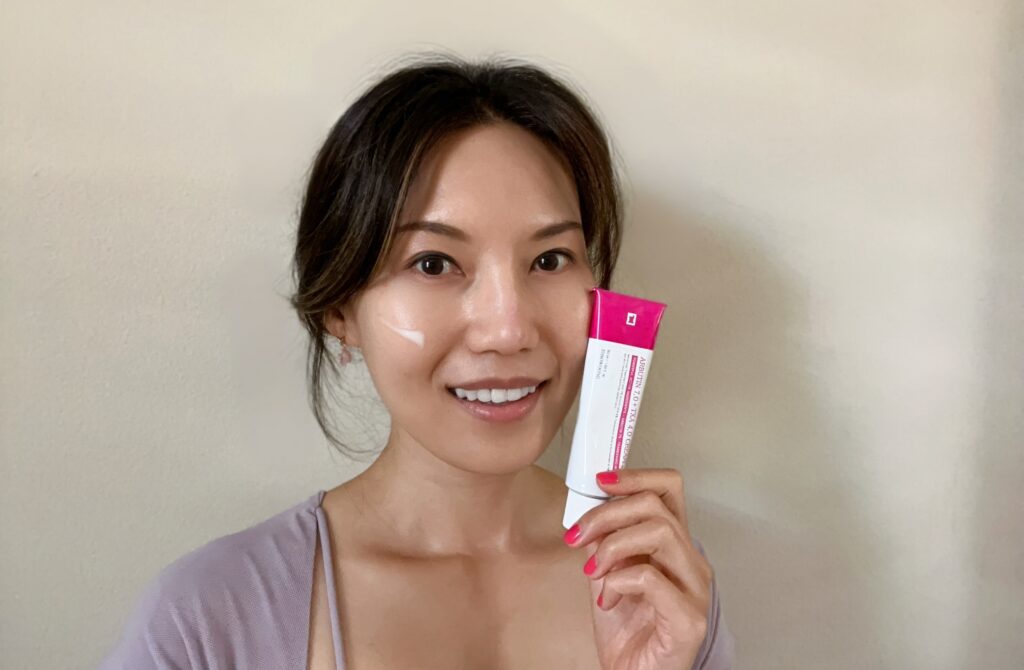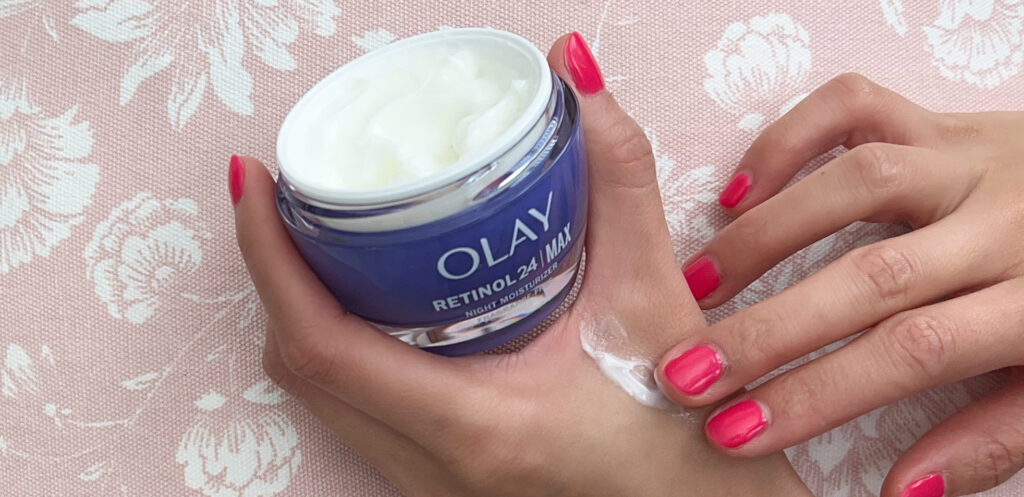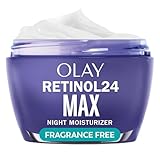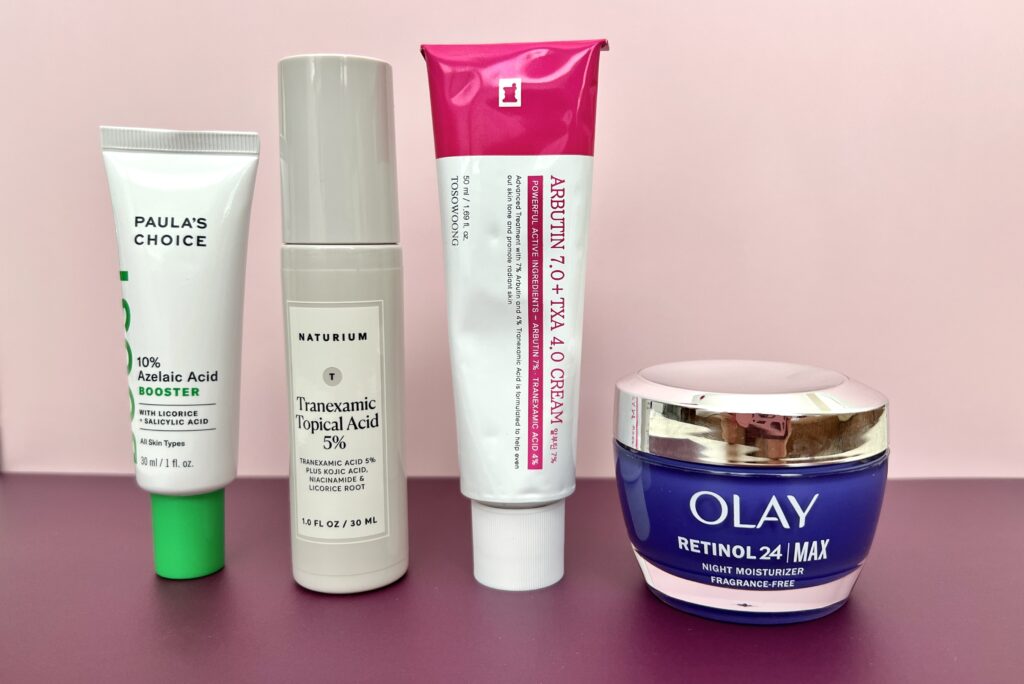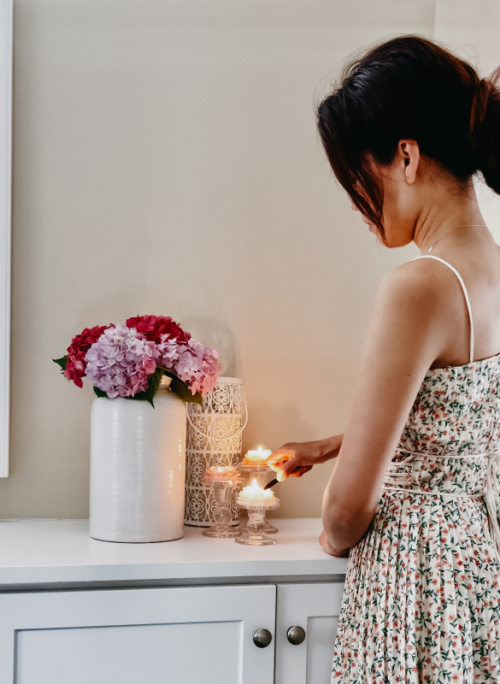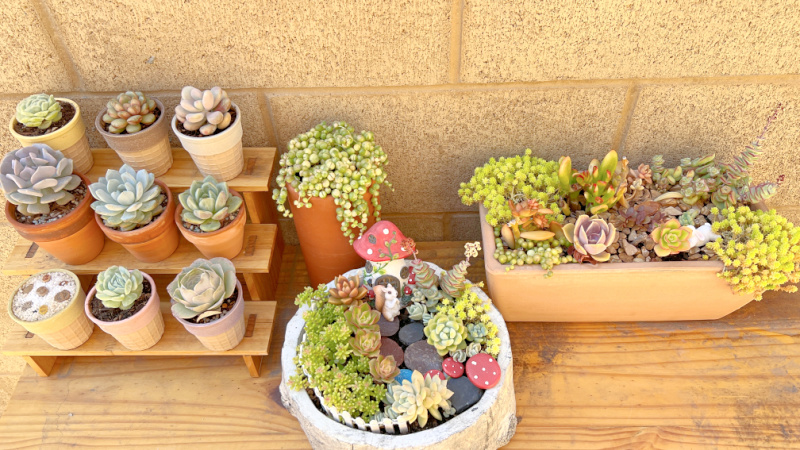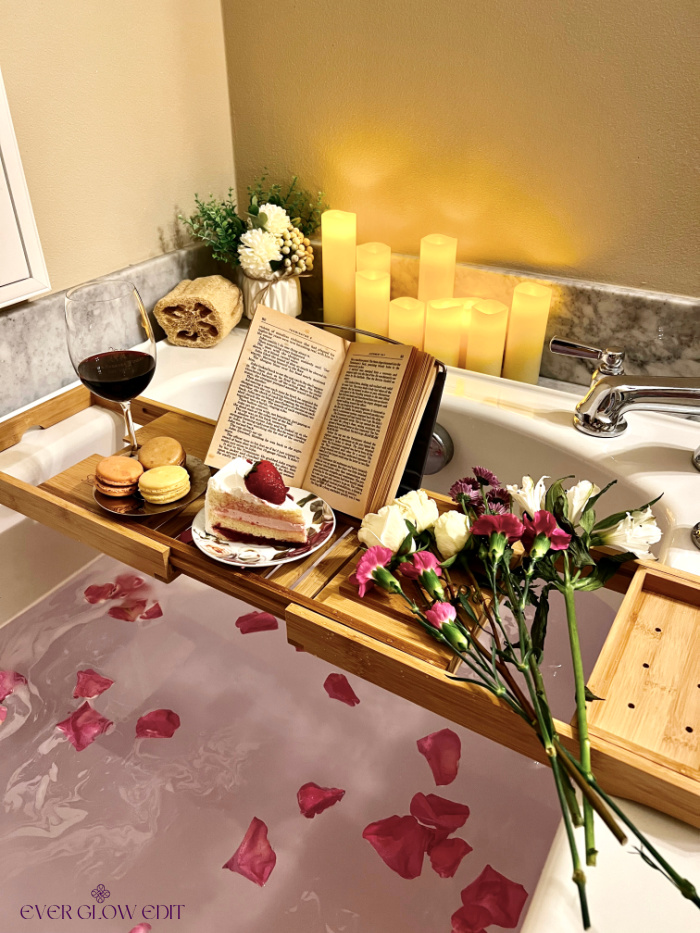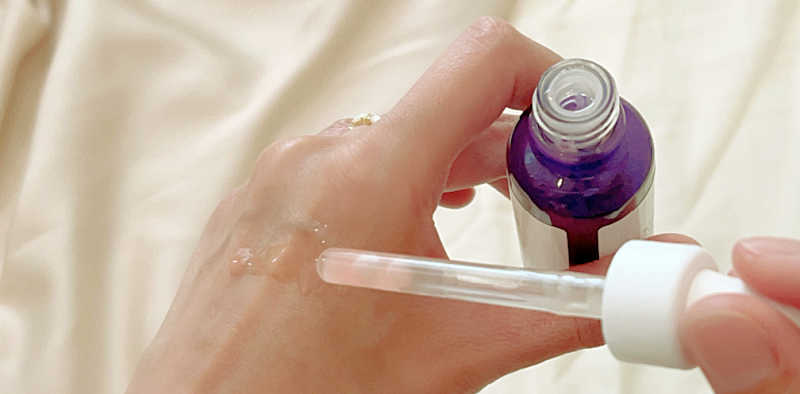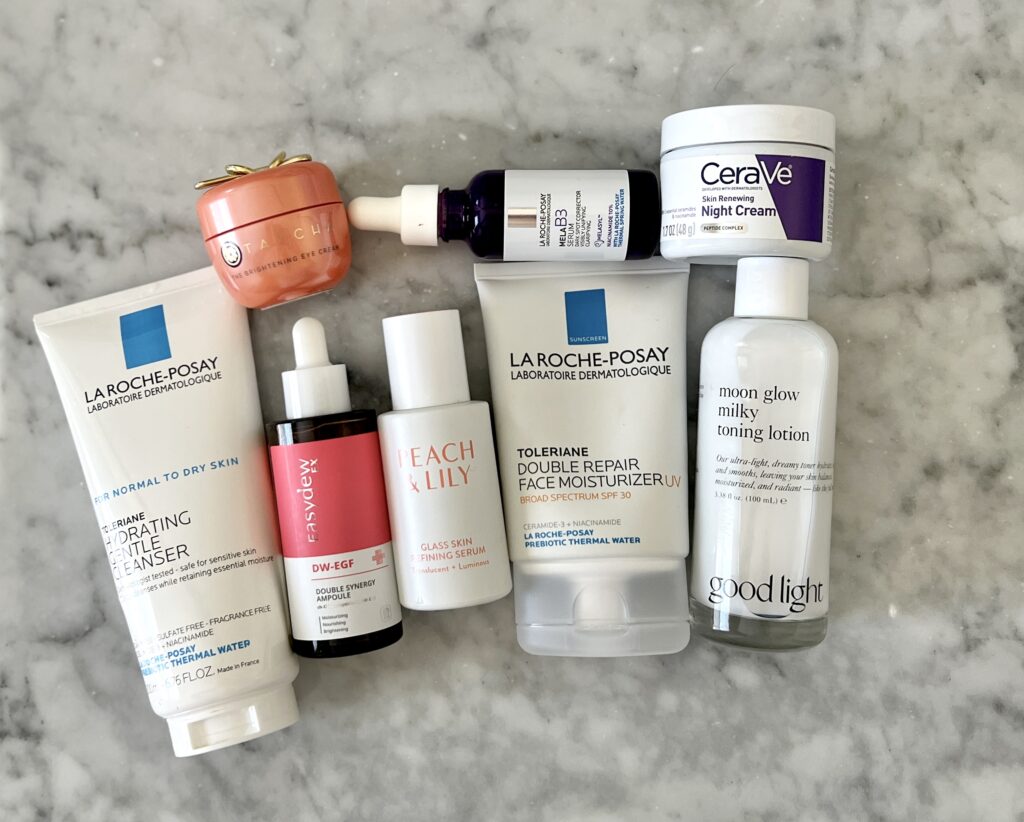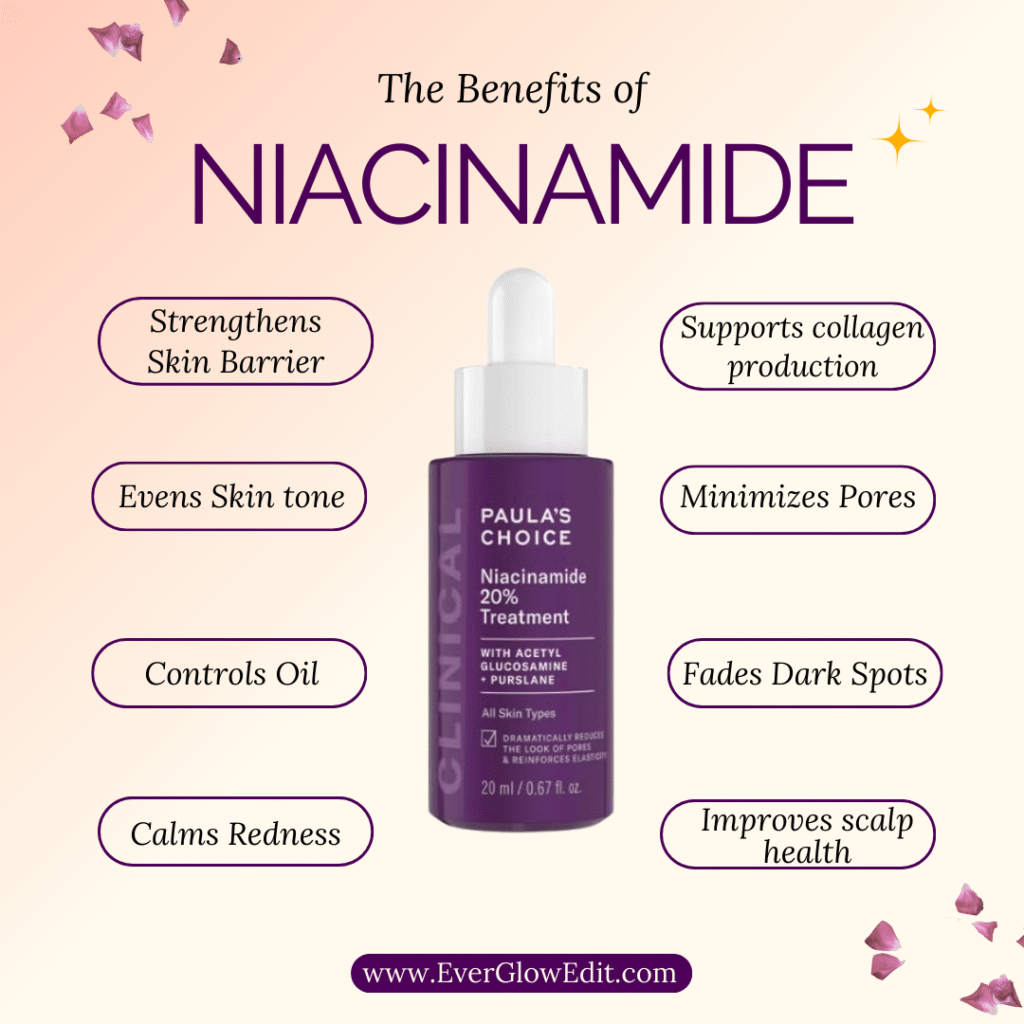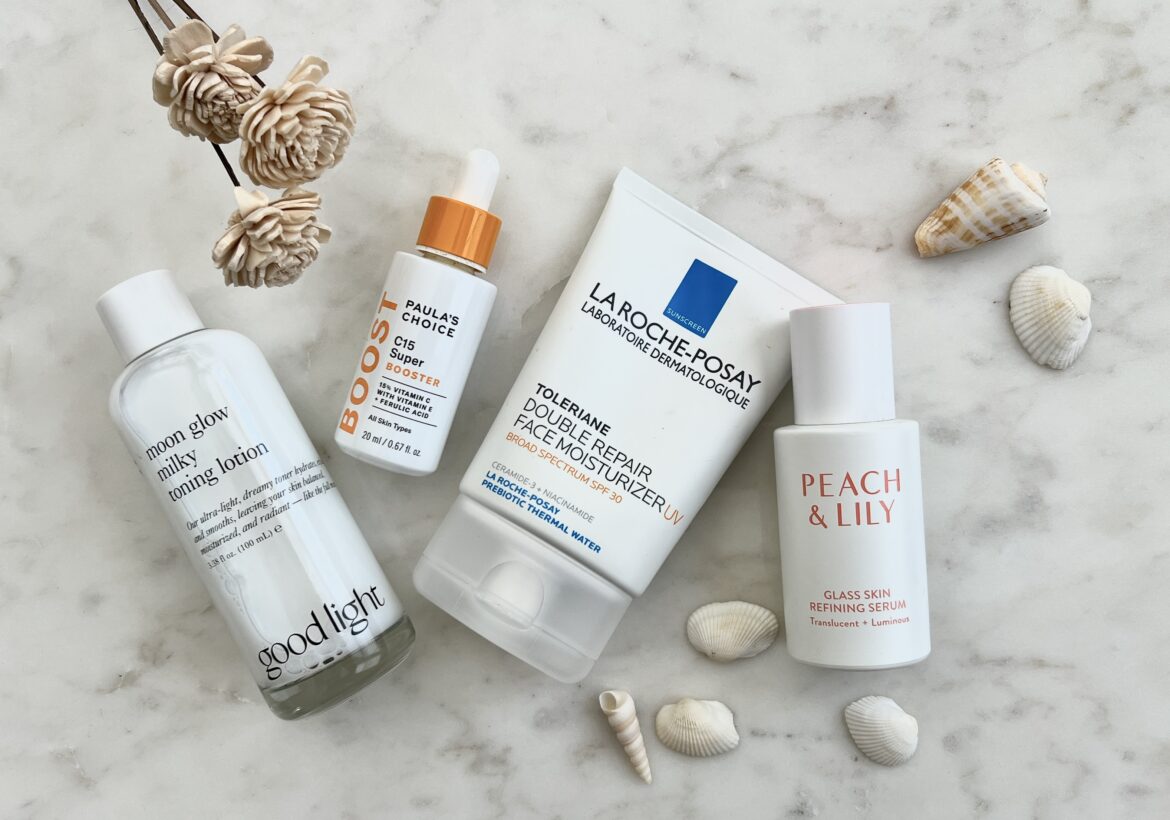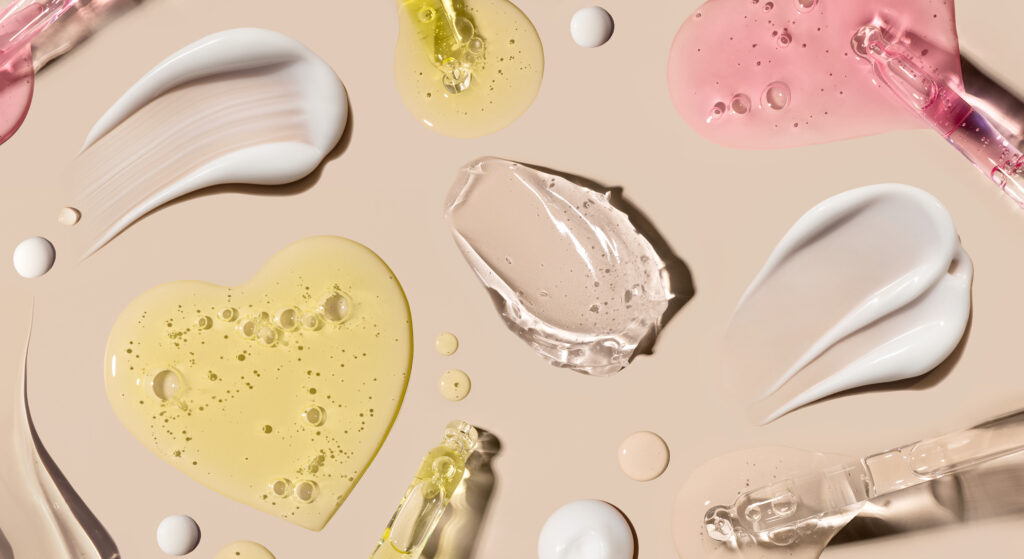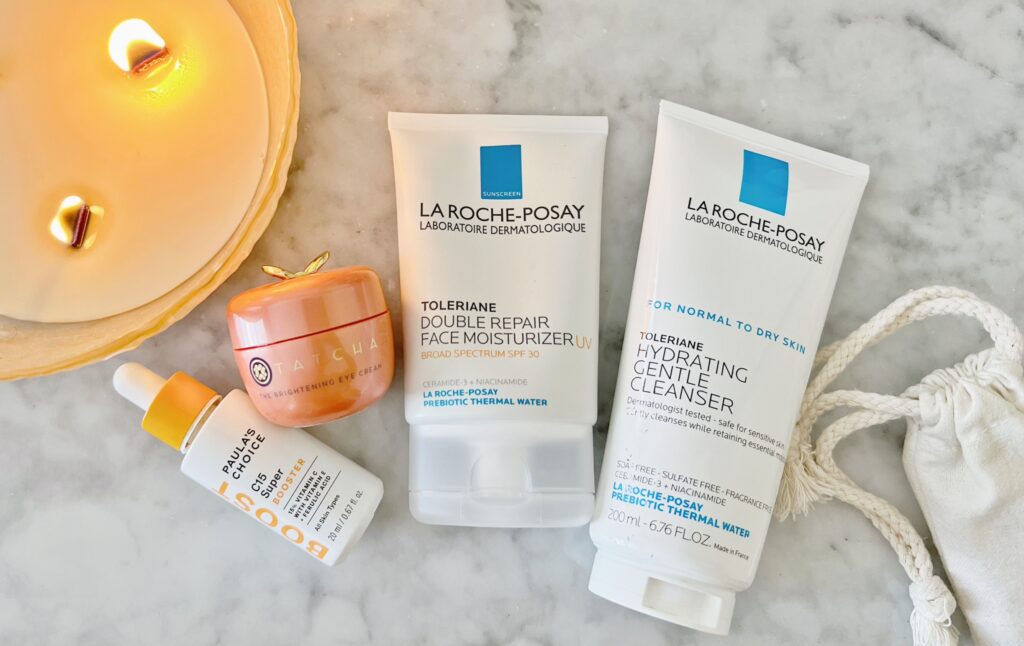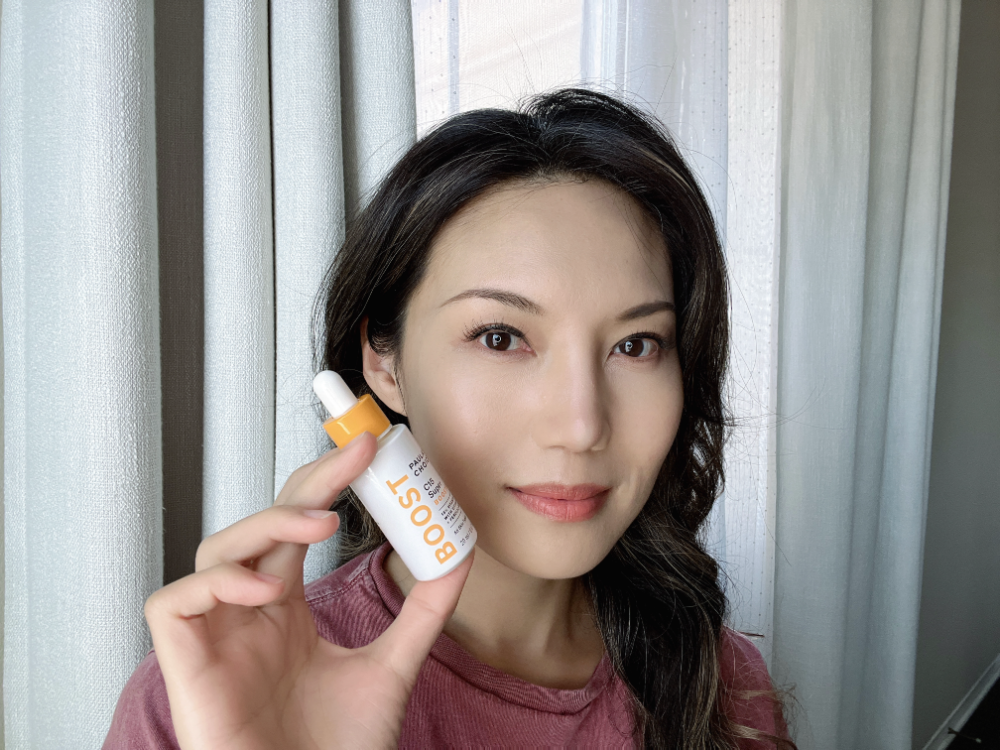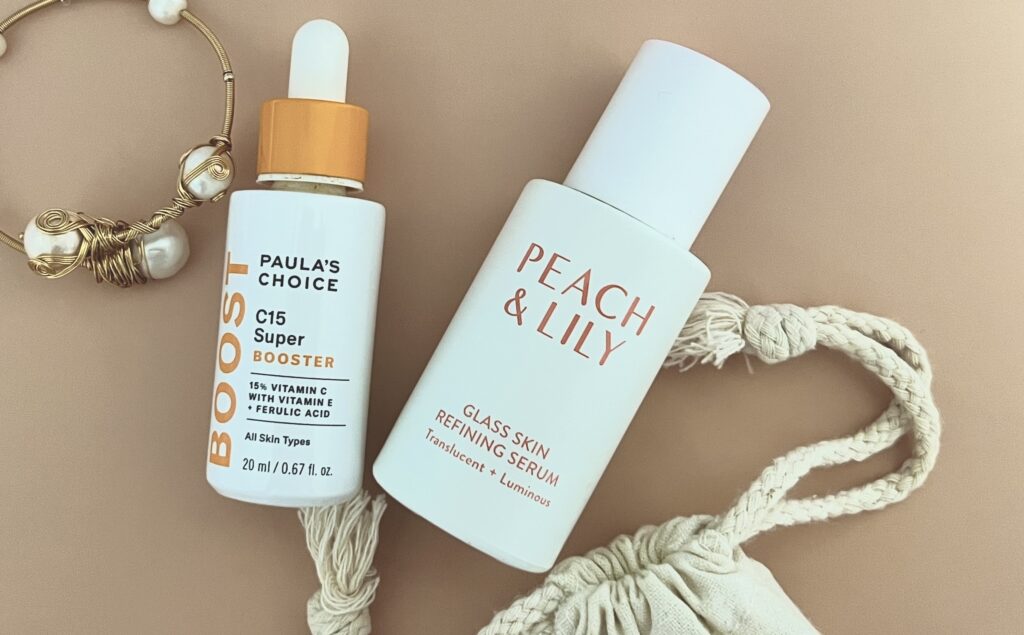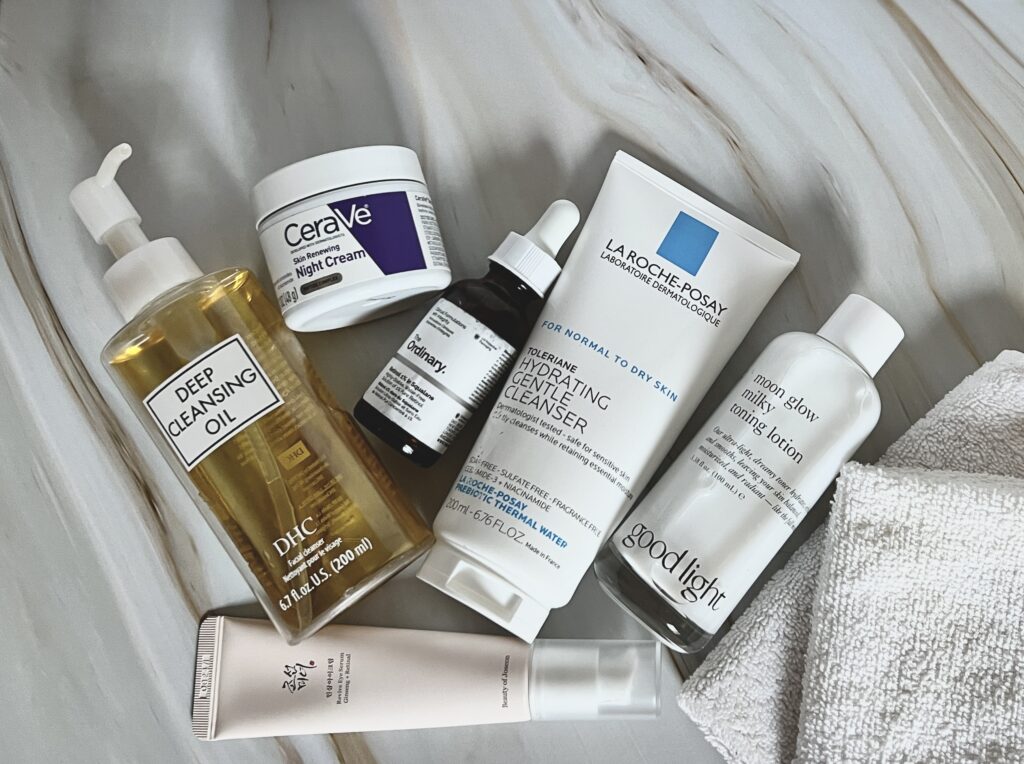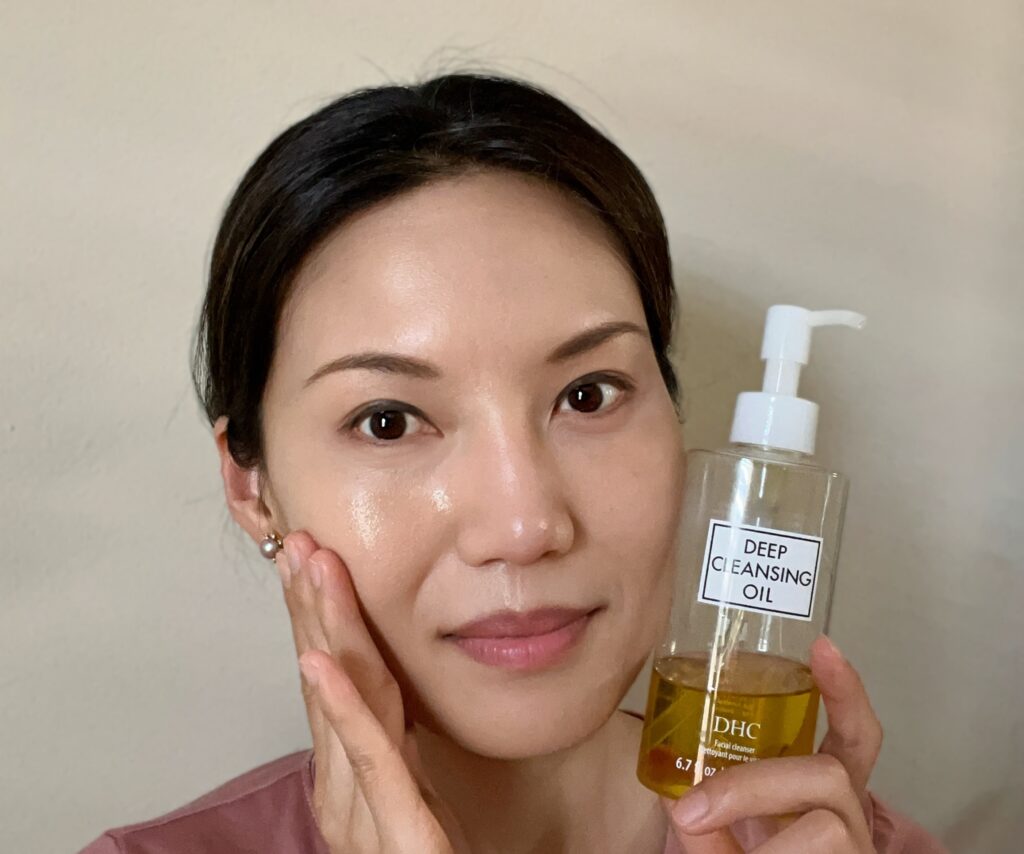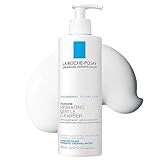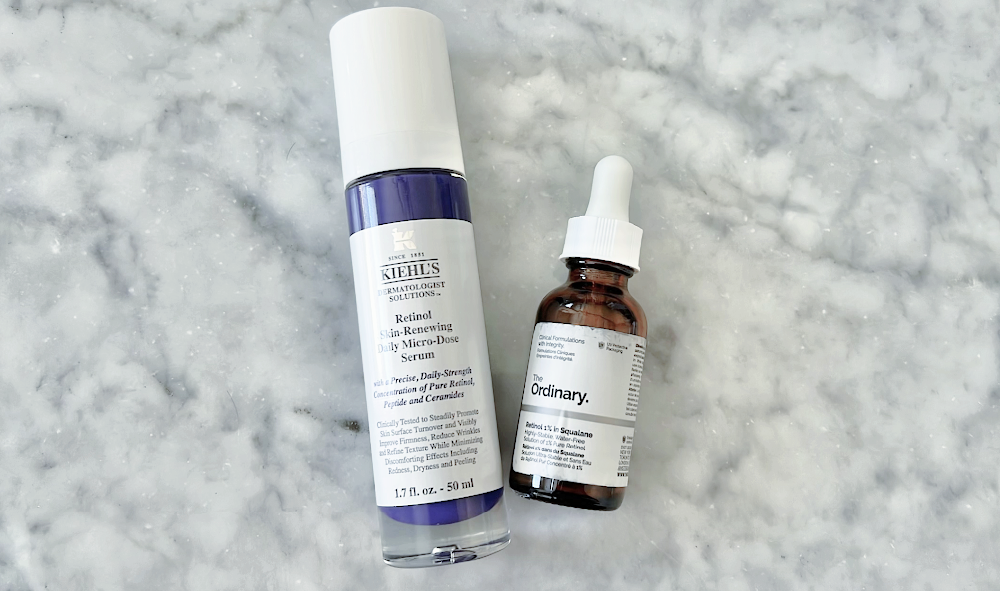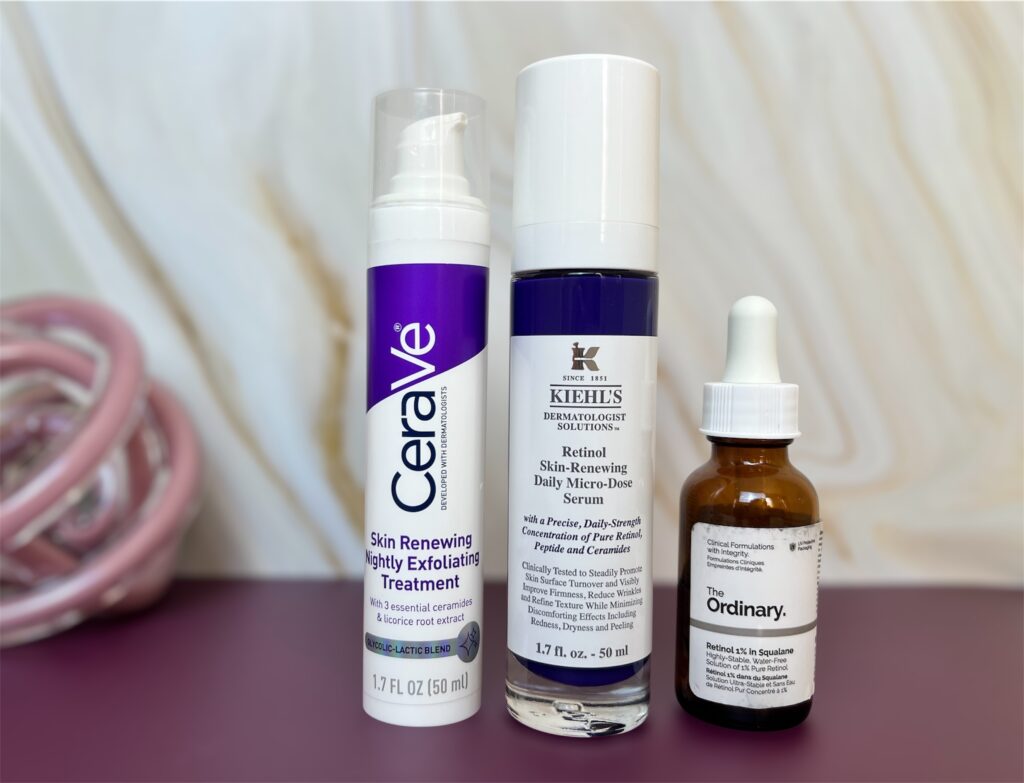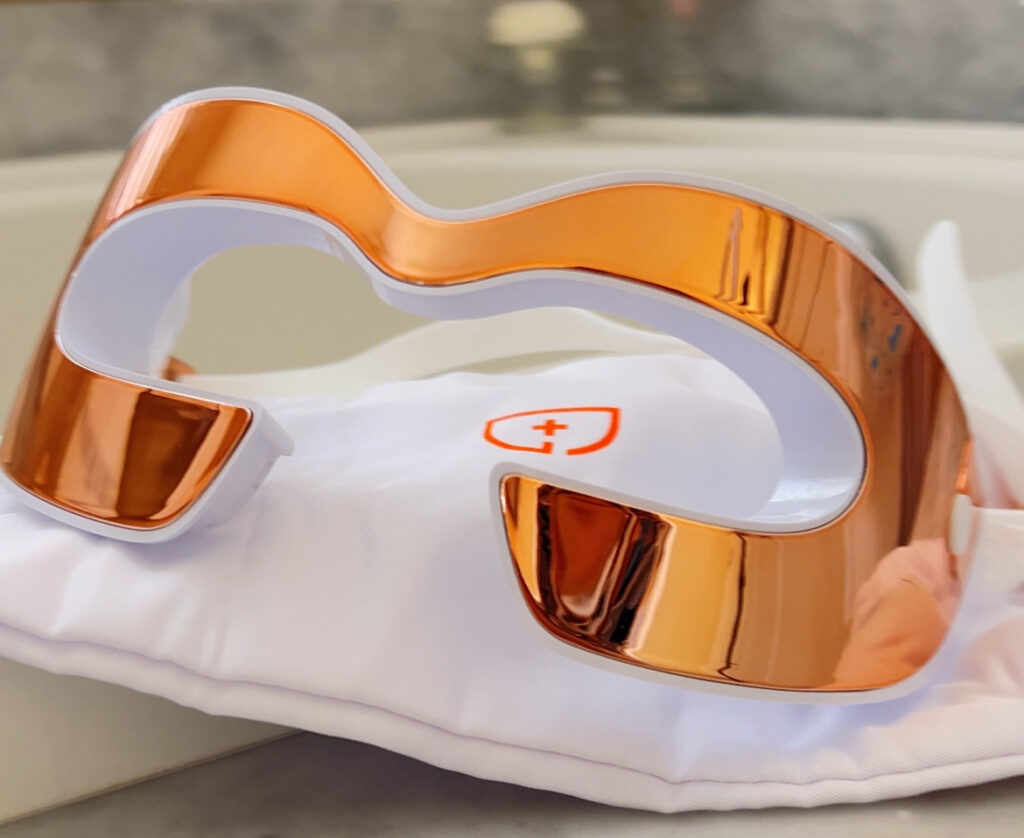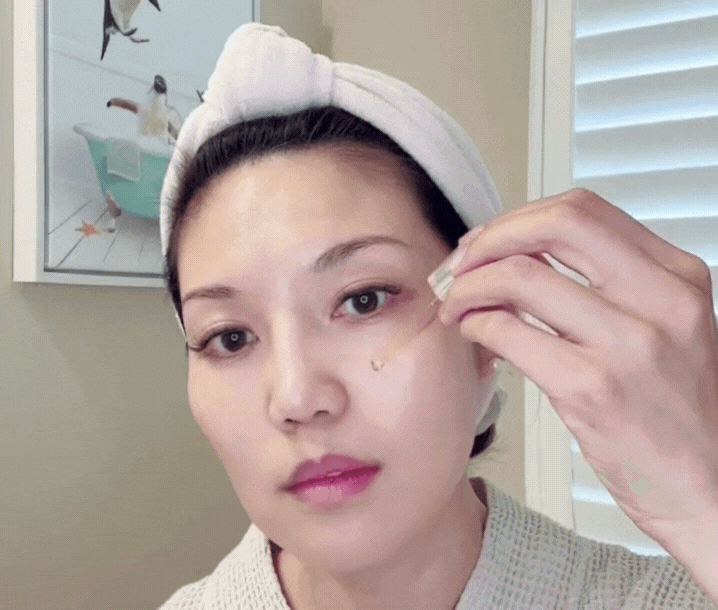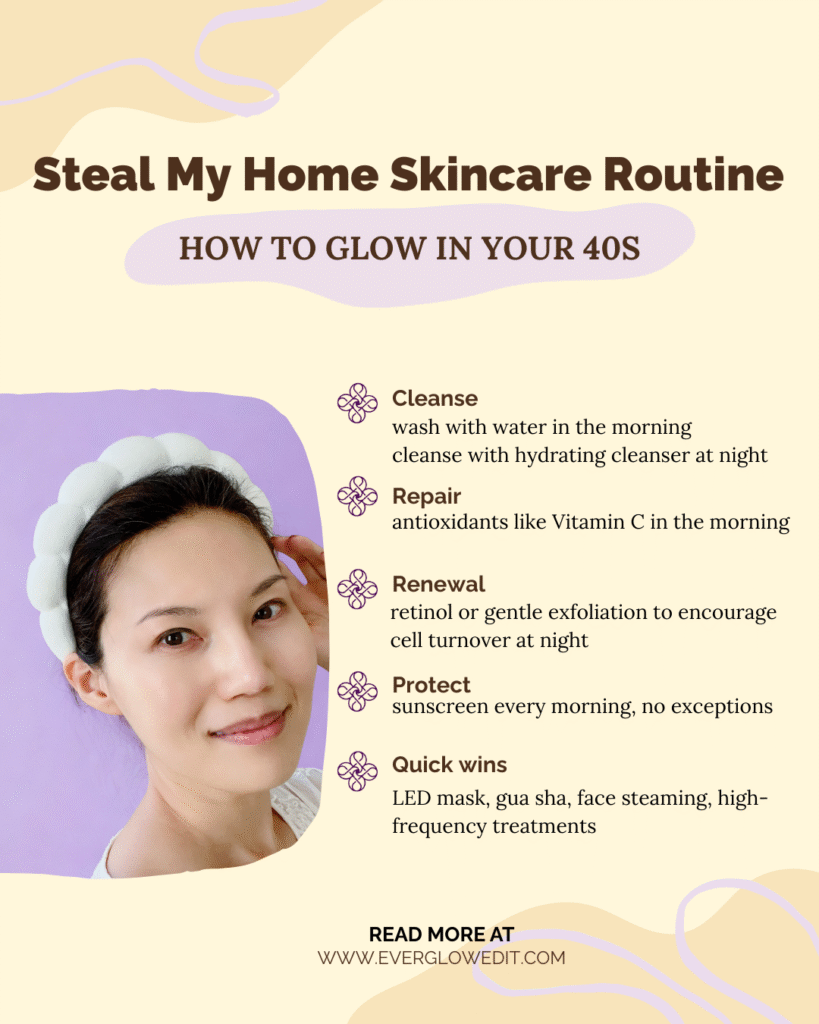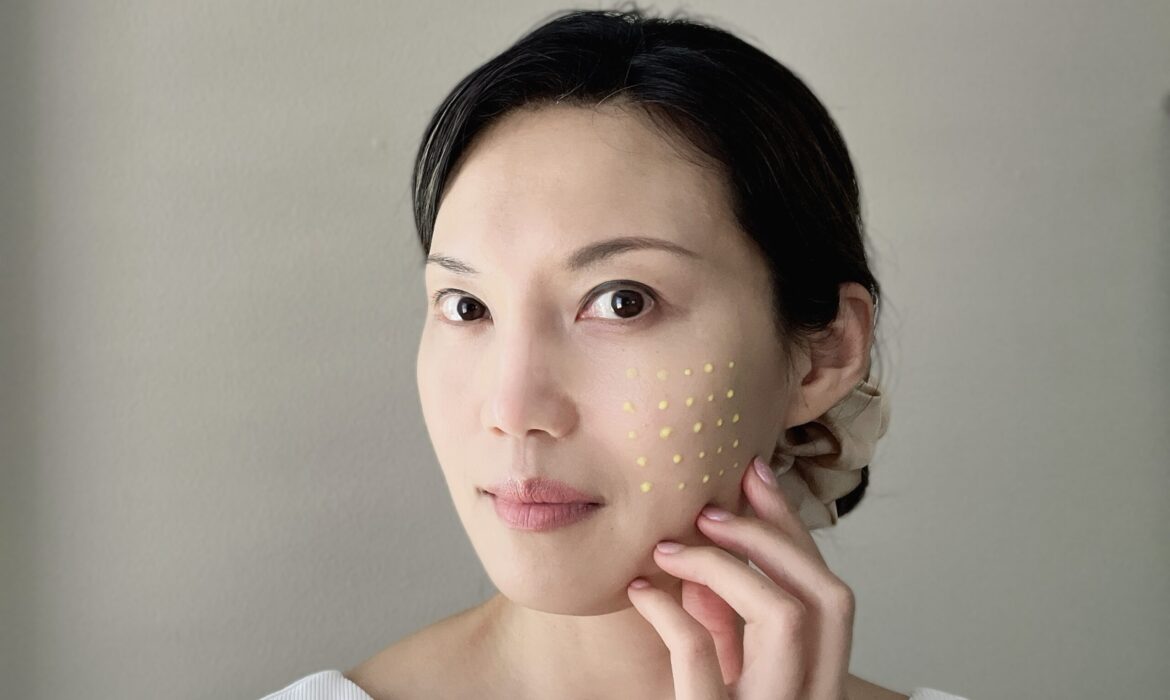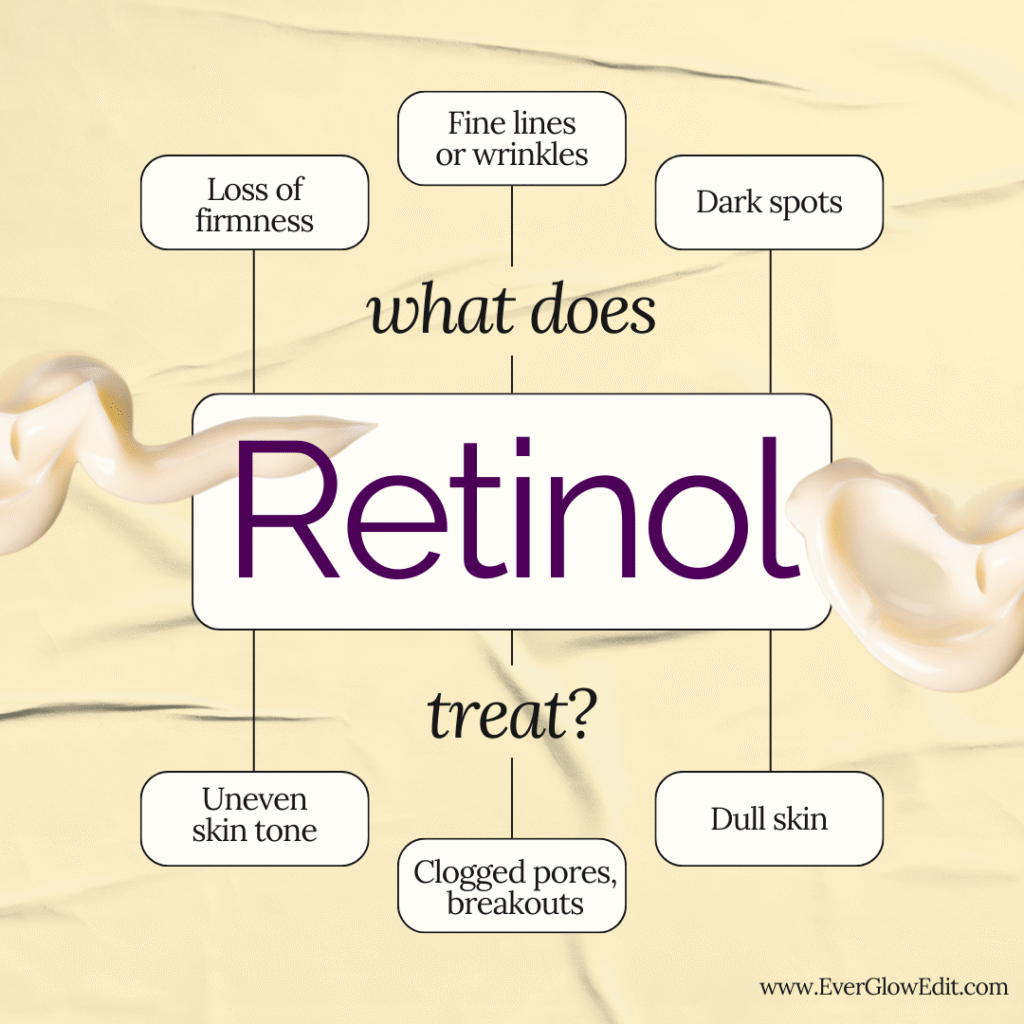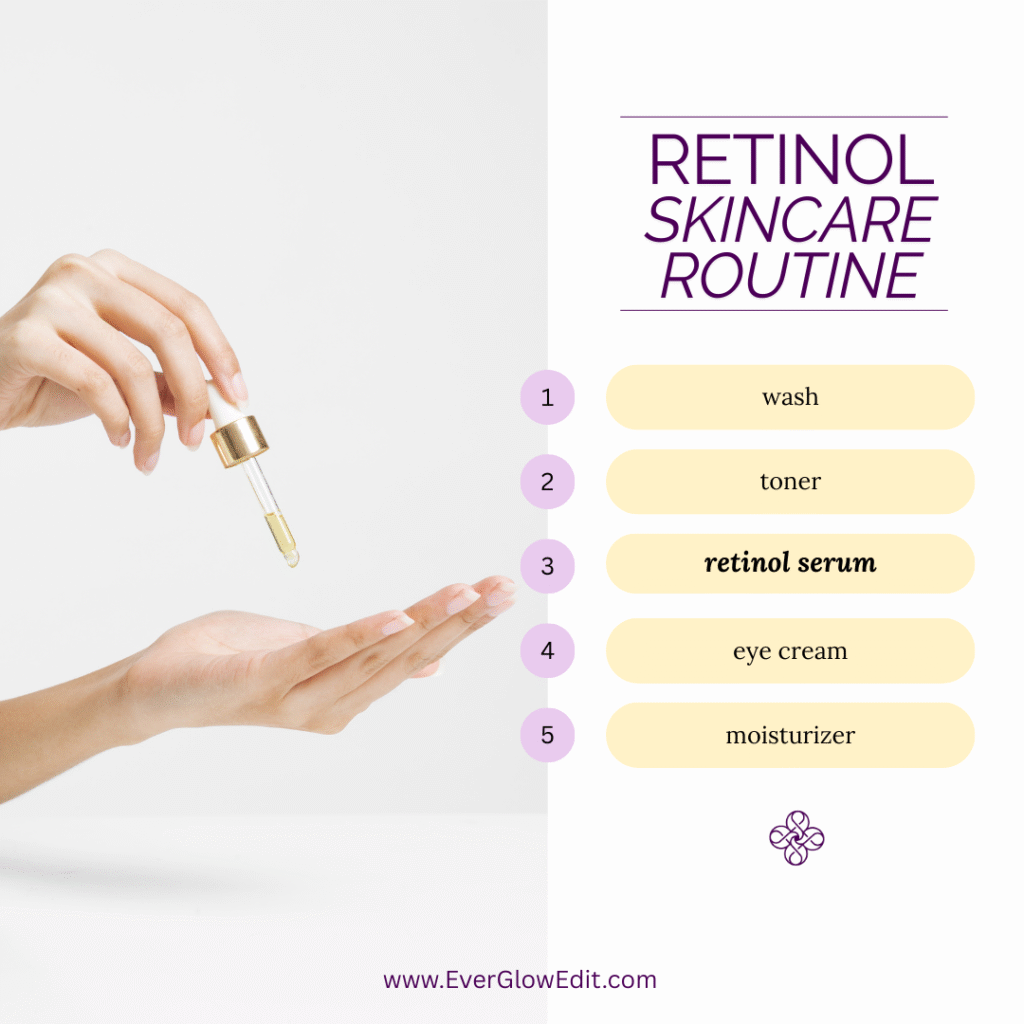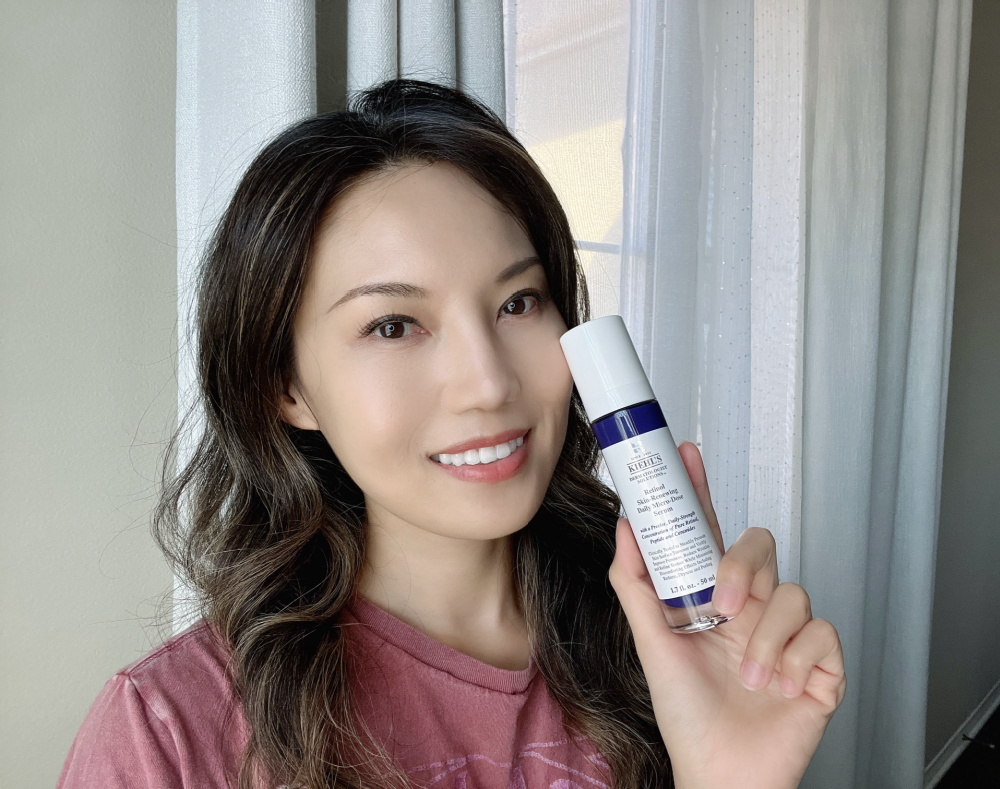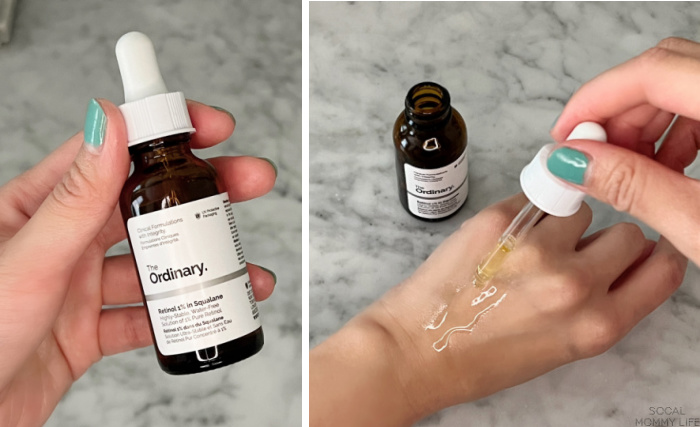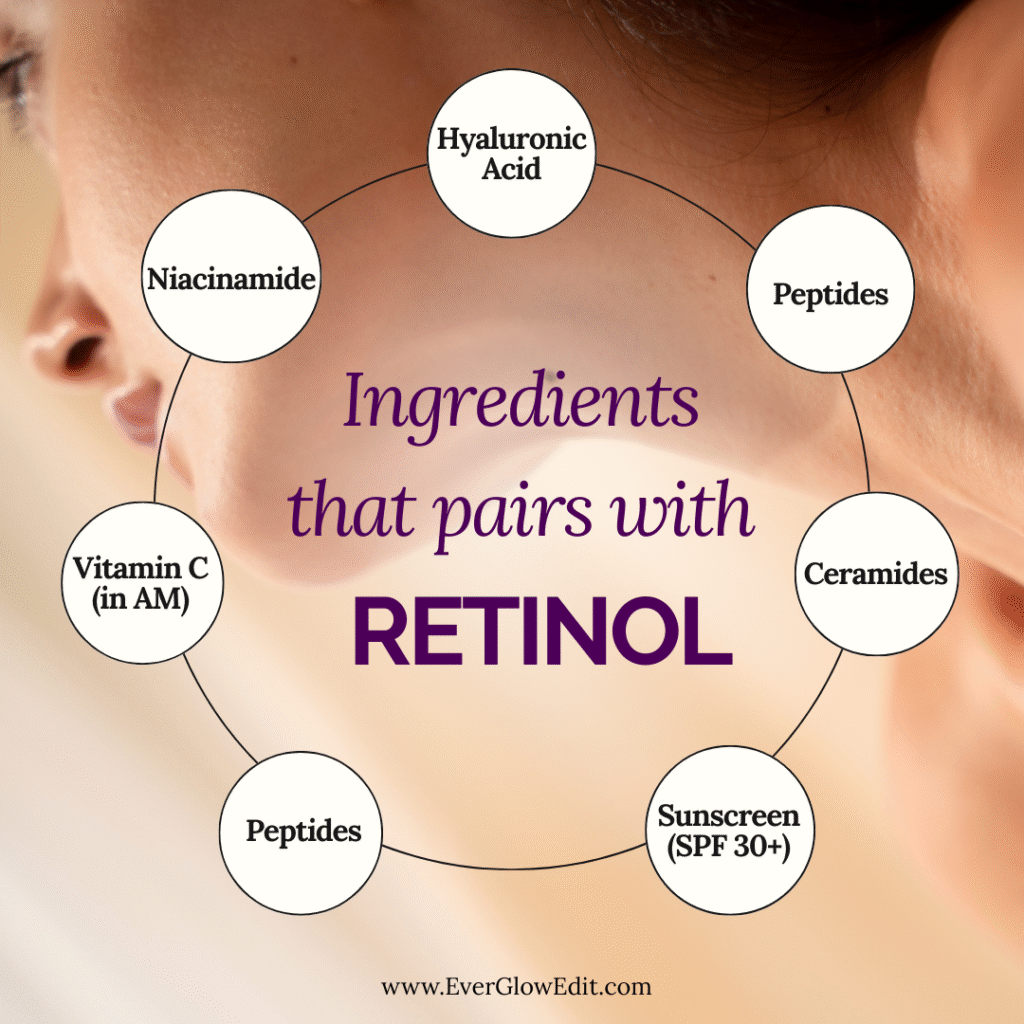Most of us spend hours (and small fortunes) perfecting our face routine, but everything below the neck? Often an afterthought.
If you’re in your late 30s, 40s, or 50s, you’ve probably noticed that body skin doesn’t bounce back like it used to. Maybe your arms feel rougher, your knees are looking a little “crepey,” or you’ve got dark spots on your shoulders that weren’t there before.
As a skincare enthusiast (and clinical science nerd at heart), I’ve tested dozens of dermatologist-approved methods and products. This post is your friendly, science-backed guide to building the best body skincare routine — one that feels luxurious but actually works.
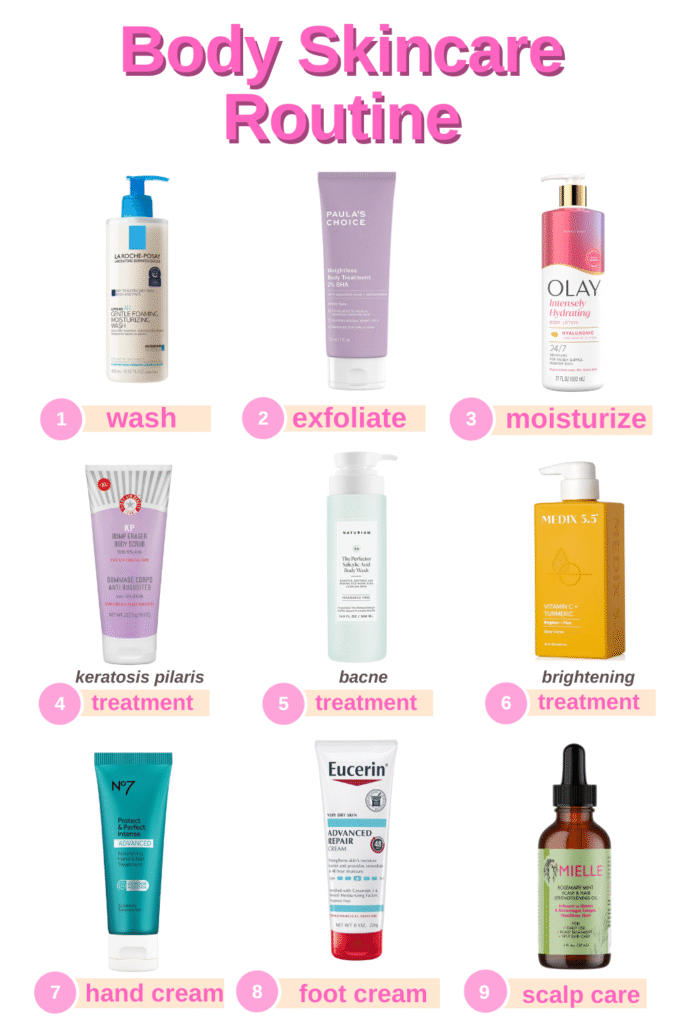
This post may contain affiliate links. Please read disclosure.
Your Body Skin Isn’t the Same as Your Face (Here’s Why It Matters)
Here’s the thing: body skin isn’t just “bigger face skin.” It’s structurally different. The skin on your arms and legs has fewer sebaceous glands (oil producers) than your face, which means it dries out faster and shows aging sooner.
That’s why dermatologists recommend what I call the WEM Cycle — Wash, Exfoliate, Moisturize. This simple structure supports your skin barrier, enhances elasticity, and maintains that healthy glow we all love.
In fact, research found that lactic acid—a gentle AHA—significantly improves hydration and barrier repair, especially on body skin.
Think of your body routine like your fitness routine: consistent, balanced, and tailored to what your skin needs.
Step 1: Cleanse Smart — Not Harsh
I used to believe the squeaky-clean feeling after a hot shower meant my skin was super fresh. Spoiler alert: that “squeak” was my natural oils being stripped away!
Dermatologists agree — over-cleansing and long, hot showers damage the skin barrier, leading to dryness and irritation. Lukewarm water is your skin’s best friend.
What to Look For in a Cleanser:
- Gentle surfactants (like cocoyl isethionate or sodium lauroyl sarcosinate)
- Hydrating ingredients like glycerin or oils
- Fragrance-free formulas if your skin is sensitive
If you have dry or sensitive skin, one of my top recommendations is the La Roche-Posay Lipikar AP+ Gentle Wash. It’s formulated with glycerin, shea butter, and niacinamide — a dream combo for restoring softness without tightness. After a shower, my skin feels clean but still cushioned, never stripped. It’s the one I reach for most often in winter when dryness hits hardest.

For a clean-beauty, minimal-ingredient option, I also love Nécessaire The Body Wash (Fragrance-Free). It’s packed with niacinamide and ceramides to strengthen your barrier, but what I love most is its texture — it feels elevated yet simple. It’s perfect if you prefer a luxurious shower experience without synthetic fragrance.
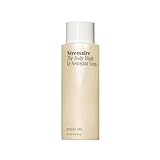
And if your skin is easily irritated or you prefer something dermatologist-tested and affordable, you can’t go wrong with the Dove Sensitive Skin Beauty Bar. It’s made with mild cleansers and stearic acid, which help replenish what your skin loses during cleansing. I like keeping one in my shower and another at the sink for daily handwashing — it’s gentle enough for both.

Step 2: Exfoliate the Right Way (Chemical Wins Over Physical)
I’ll admit — I used to love a good body scrub. The problem? Those sugar and salt scrubs were creating microtears and leaving my skin even drier.
For women over 35, chemical exfoliation is a better option. Instead of scrubbing, it gently dissolves dead skin cells, revealing smoother, softer skin underneath. And among all the options I’ve tried (and I’ve tested quite a few), one product stands out as the gold standard: Paula’s Choice 2% BHA Body Exfoliant.
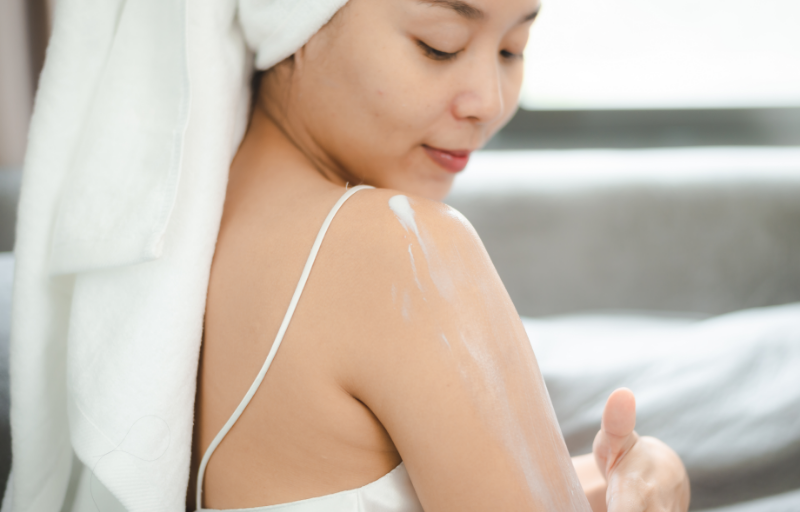
This lotion uses salicylic acid (BHA) — an oil-soluble exfoliant that penetrates deep into pores to clear out congestion and smooth rough texture. It’s especially effective for “chicken skin” (keratosis pilaris), body acne, or those tiny bumps you get on your upper arms or thighs. Every time I use it, my skin feels noticeably softer within a few days — and that smoothness just gets better with consistent use.
What I really love is that this formula includes soothing ingredients like chamomile and green tea extract to calm any redness or irritation. And the texture? Lightweight, silky, and non-sticky — it sinks right in, so you can get dressed right after applying it.

As with any exfoliating lotion, only apply 2-3 times per week after cleansing. Avoid using on freshly shaved skin (trust me, it’ll sting).
Step 3: Moisturize Like You Mean It
This is where the real magic happens. Moisturizing isn’t just about softness — it’s about locking in hydration and rebuilding your skin barrier.
Dermatologists call it the “golden three minutes rule”: apply your moisturizer within three minutes of stepping out of the shower, while your skin is still slightly damp. This helps trap water and prevents transepidermal water loss.
Here’s what I recommend:
| Moisturizer | Key Actives | Texture | Why It Works |
|---|---|---|---|
| Olay Hyaluronic + Niacinamide Body Lotion | Niacinamide, Hyaluronic Acid | Lightweight gel-cream | Brightens and hydrates |
| CeraVe SA Lotion for Rough & Bumpy Skin | Ceramides, Lactic Acid, Salicylic Acid | Creamy | Repairs barrier and smooths texture |
| OneSkin Body Topical Supplement | OS-01 peptide, Niacinamide | Silky lotion | Targets aging and firmness |
I personally love the Olay Body Lotion for everyday use — it gives my skin that dewy sheen without feeling greasy.
If you also struggle with facial dryness, check out my post on Morning Skincare Routine for Dry Skin — it’s packed with hydrating tips to keep your face as soft and glowing as the rest of your body.
Step 4: Targeted Body Treatments for Common Concerns
Once you’ve nailed your cleanse–exfoliate–moisturize rhythm, you can layer in specialized treatments for specific issues like dark spots, acne, or loss of firmness.
Let’s break it down by concern:
Rough Bumps (Keratosis Pilaris)
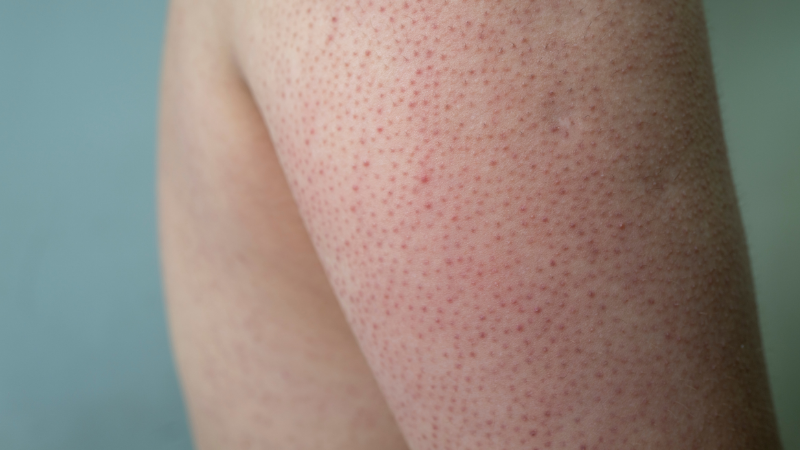
Those tiny “chicken skin” bumps on arms or thighs? Totally treatable. Use lactic acid or urea-based creams daily, and retinoids for stubborn cases.
I personally swear by First Aid Beauty KP Eraser. This scrub is a little powerhouse. It combines chemical exfoliants (glycolic and lactic acids) with gentle physical exfoliators to smooth away those stubborn bumps. What makes me recommend it so often is its balanced formula — it’s powerful but never harsh. It’s completely free of drying alcohols, artificial fragrance, parabens, sulfates, and other common irritants, so even sensitive skin can handle it.

Body Acne (Bacne)
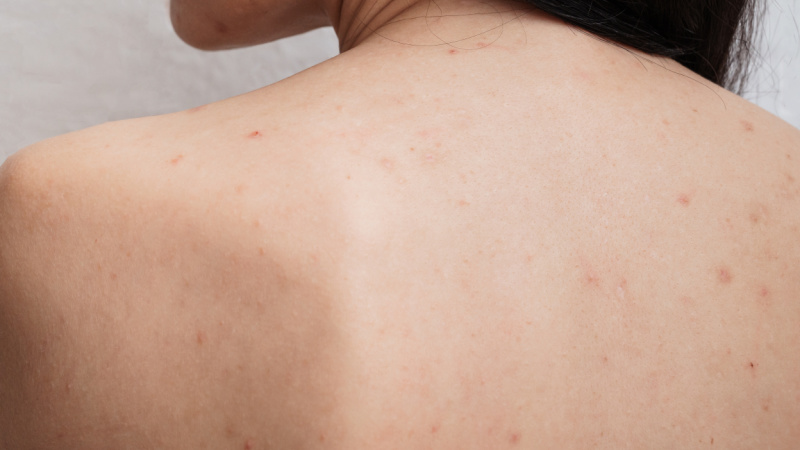
Back and shoulder acne thrive on sweat, friction, and oil buildup.
Use a salicylic acid or benzoyl peroxide body wash 3–4x weekly.
My favorite combo:
- Naturium The Perfector Salicylic Acid Wash (gentle and effective)
- PanOxyl Acne Foaming Wash 5% BP (for flare-ups)
Dark Spots and Uneven Tone
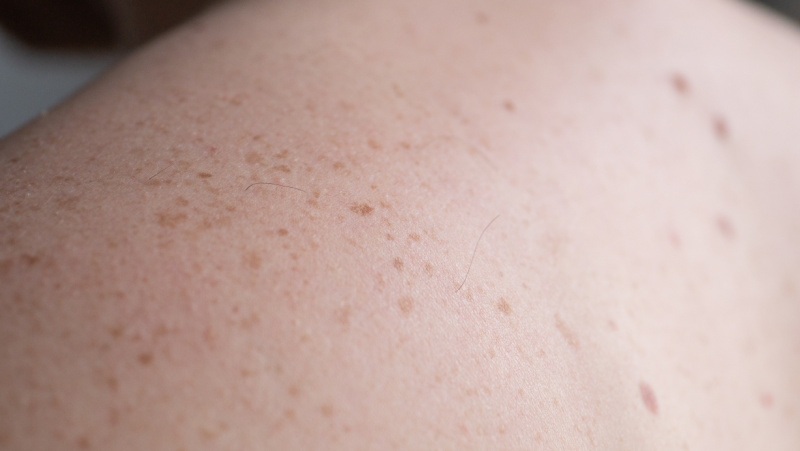
If you’re dealing with uneven skin tone or dullness on your body, my go-to is the Medix 5.5 Vitamin C + Turmeric Brightening Body Lotion — I love how it makes my skin look smoother and more radiant without feeling greasy.
It’s packed with Vitamin C to fade dark spots and Turmeric to boost glow, plus Shea Butter, Aloe Vera, and Vitamin E to deeply hydrate and calm dry skin. The texture feels rich but sinks in beautifully, leaving skin soft, nourished, and luminous all day.
If you deal with dullness, or dark spots on your body, I can’t recommend this enough. It’s gentle enough for daily use, and I’ve personally noticed how it helps revive dull skin and keep it looking bright and healthy throughout the day.

If you’re struggling with dark spots on your face, check out my ultimate routine for hyperpigmentation and brighter complexion.
4. Loss of Firmness and Crepiness
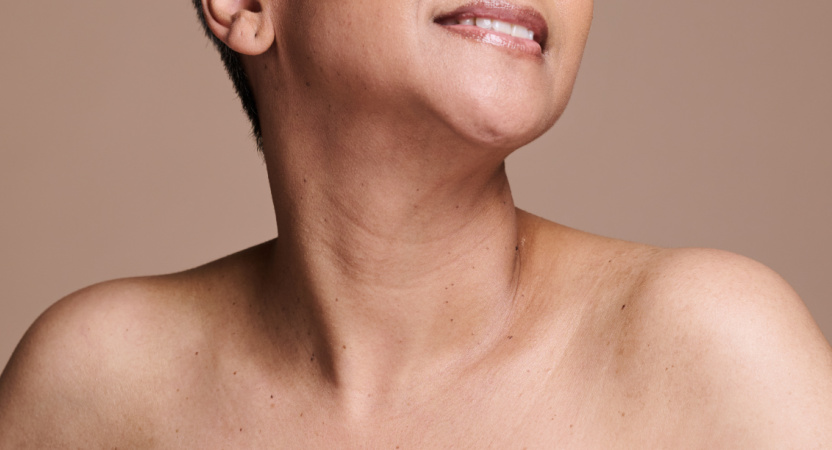
For mature skin, ingredients like retinoids and peptides are your best allies.
They boost collagen production and improve elasticity over time. If you have wrinkles on your neck, this post deep dive into how to remove neck lines fast.
Paula’s Choice Retinol Body Treatment keeps my 40s body firm and silky smooth. I love that it contains hero anti-aging ingredients like retinol, vitamin C & E, shea butter, and evening primrose oil. All of these ingredients work synergistically to rejuvenate skin and firm skin.

If you’ve been wanting the benefits of retinol without the irritation, the True Botanicals Phyto-Retinol Lotion is such a gem. I love how this plant-based formula uses bakuchiol, a natural retinol alternative, to smooth fine lines, even out texture, and boost firmness — all while keeping skin calm and hydrated. It’s gentle enough for daily use, even on sensitive skin, and has a lightweight, silky feel that layers beautifully under sunscreen or body oil. This one’s perfect if you want plant-based ingredients that deliver results.

Step 5: Don’t Forget Hands, Feet, and Scalp
These areas work the hardest yet get the least love. Let’s fix that.
Hands
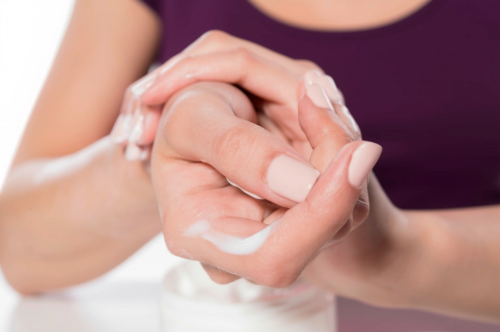
Our hands are one of the first places to show signs of aging — constant washing, sun exposure, and even hand sanitizers can leave them dry, rough, and lined. That’s why I never skip hand cream, and lately, I’ve been loving the No7 Protect & Perfect Intense Advanced Nourishing Hand and Nail Cream.
It’s packed with peptides and antioxidants that help smooth fine lines and improve skin texture, while shea butter deeply hydrates without feeling greasy. What I love most is how quickly it absorbs — it leaves my hands soft, silky, and protected, not sticky. Over time, I’ve noticed my hands look more even-toned and feel much more supple.
When your skin barrier is healthy, your hand and body lotions work even better. One of my favorite barrier-boosting ingredients is niacinamide — I explain how it helps calm, smooth, and strengthen skin in this blog post
Feet
Rough, cracked heels can sneak up on you — especially if you love sandals (guilty!) I always recommend using a lactic acid–based foot cream, which gently exfoliates away dead skin while deeply moisturizing.
One of my favorites is the Eucerin Advanced Repair Foot Cream. It’s formulated with urea and lactic acid, a powerhouse combo that works overnight to soften calluses and rough patches. I love how it delivers serious hydration without feeling greasy, and by morning, my feet always feel noticeably smoother.
Scalp
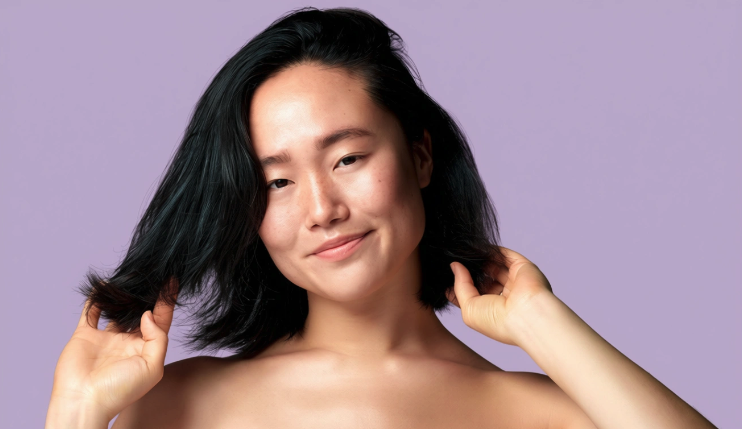
If you’ve been dealing with an itchy, dry scalp or slow hair growth, you need to try the Mielle Organics Rosemary & Mint Hair Oil. This has been a total game-changer for me — it not only calmed my irritated scalp but also helped my hair grow noticeably faster and stronger.
It’s infused with biotin, rosemary, and peppermint essential oils, which work together to stimulate the scalp, boost circulation, and nourish hair follicles from the root. I love the cooling, tingly sensation when I massage it in — it feels like a mini spa treatment for my scalp!
Here’s how I use it: I part my hair, apply a few drops directly to my scalp, and gently massage it in for a few minutes. Then I leave it on for about an hour before shampooing.
If you’re on a hair growth journey, definitely check out my other post: How to Make Flaxseed Gel for Hair Growth — it pairs perfectly with this scalp oil for stronger, shinier hair from root to tip.
Your Weekly Full-Body Skincare Schedule
If this feels like a lot, don’t worry — here’s how to make it simple and realistic:
| Day | Routine Focus | Key Steps |
|---|---|---|
| Daily | Hydration & Barrier Care | Cleanse (gentle wash) → Moisturize within 3 min |
| 3–4x/week | Exfoliation | Apply AHA/BHA lotion to rough areas |
| 2–3x/week | Anti-Aging | Use retinol or peptide lotion |
| Weekly | Scalp, nails, feet | Deep nourish + exfoliate |
| Always | SPF | Reapply on exposed skin daily |
Consistency beats perfection — even if you skip a day, your skin remembers the care
Final Thoughts On Best Body Skincare Routine
Body skincare isn’t about chasing perfection — it’s about honoring your body. The glow you get is just a bonus.
When you give your skin consistent attention — from gentle cleansing to smart exfoliation and barrier repair — you’ll notice not just smoother texture, but confidence in your own skin.
And remember, the best body skincare routine works best when paired with overall wellness. Eating well, managing stress, and prioritizing yourself are key — learn more in my guide Wellness Tips for Moms.

